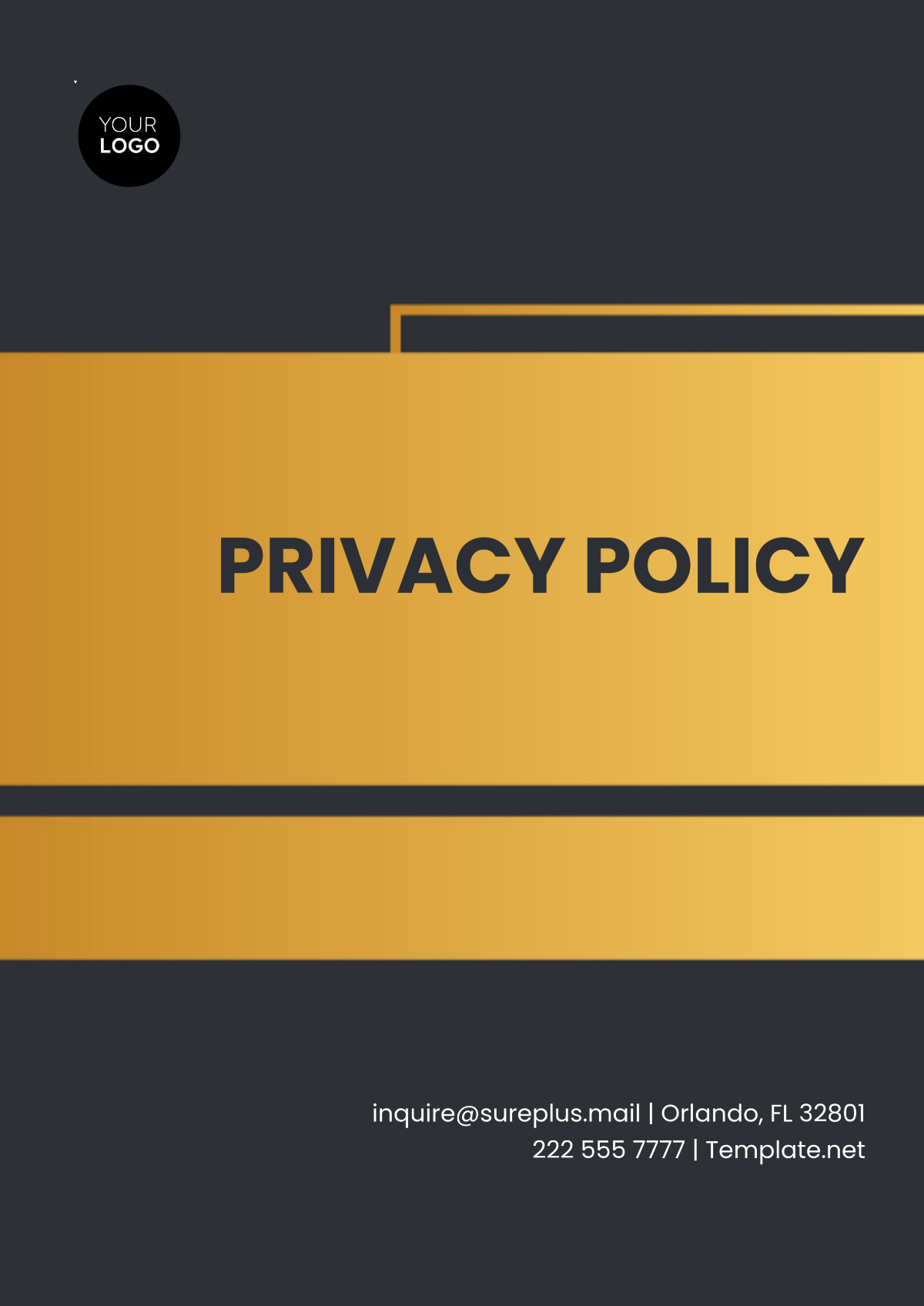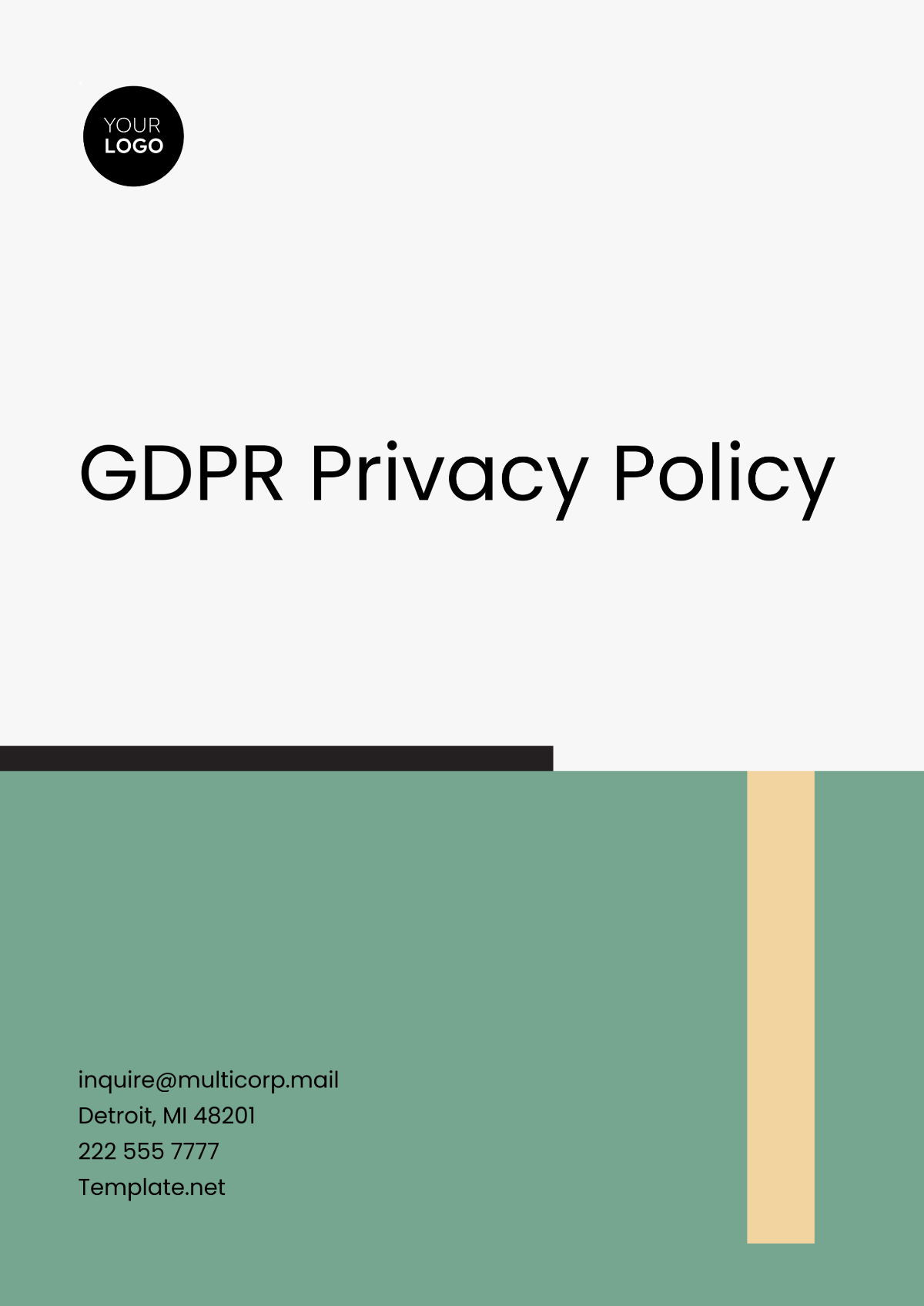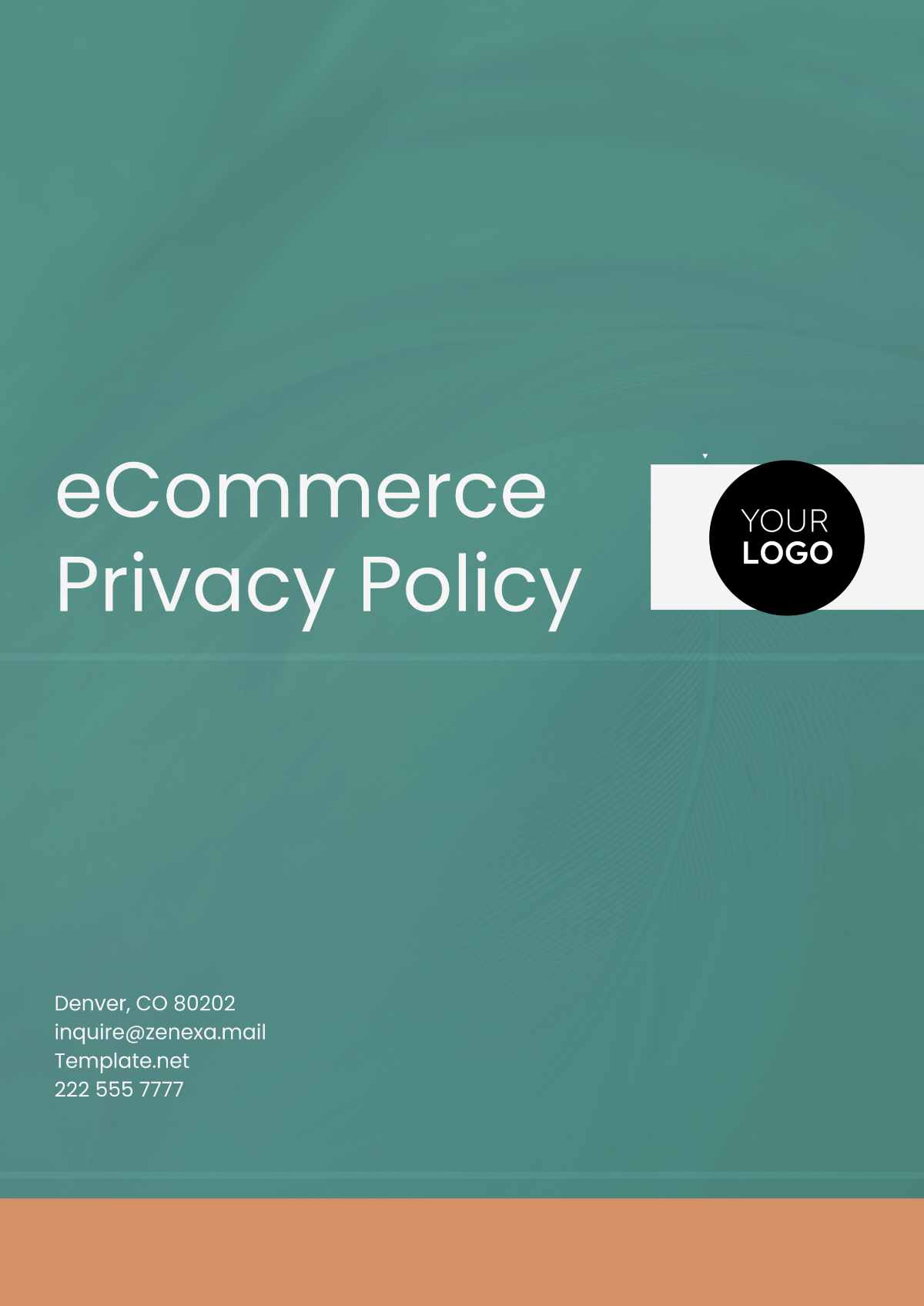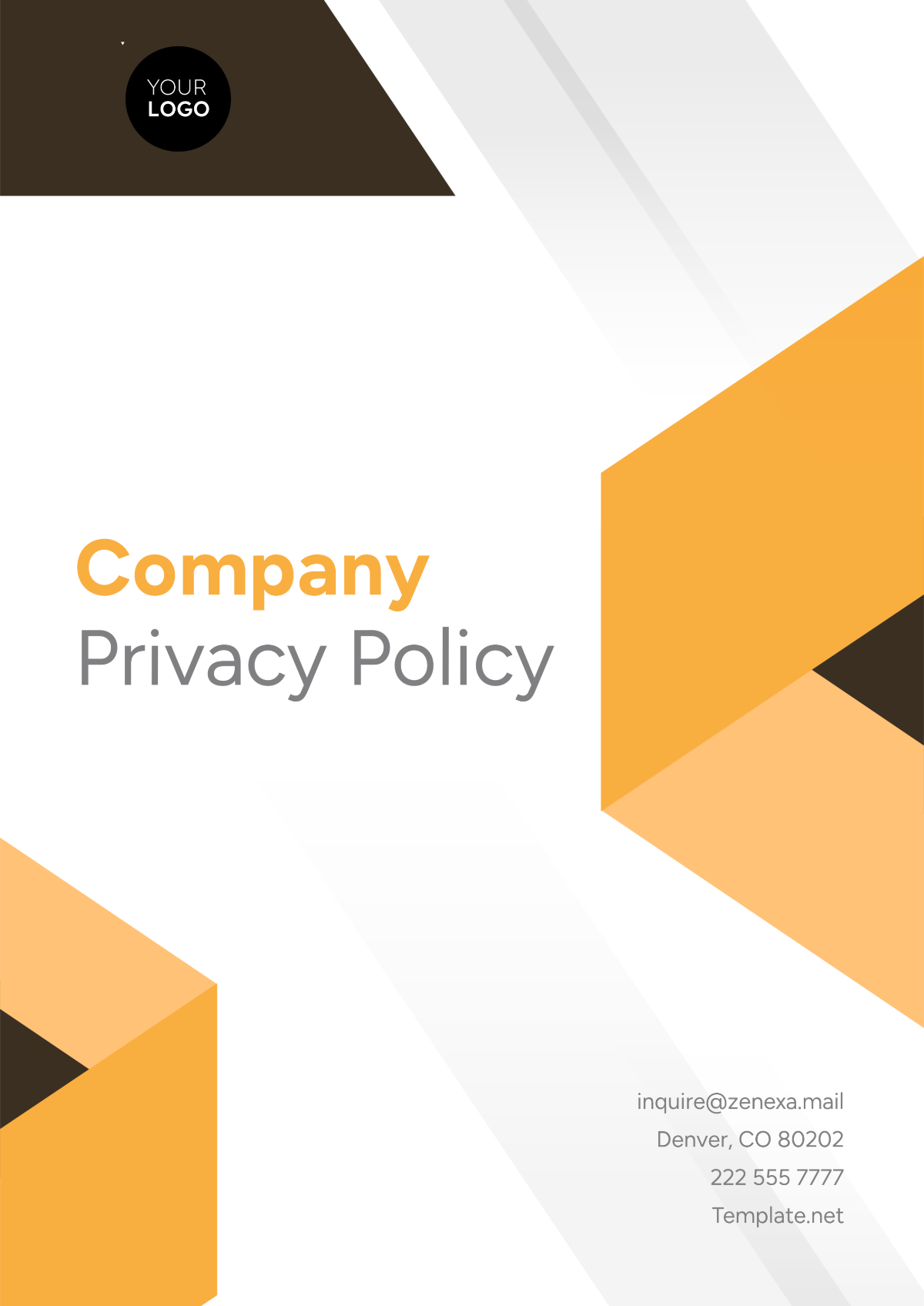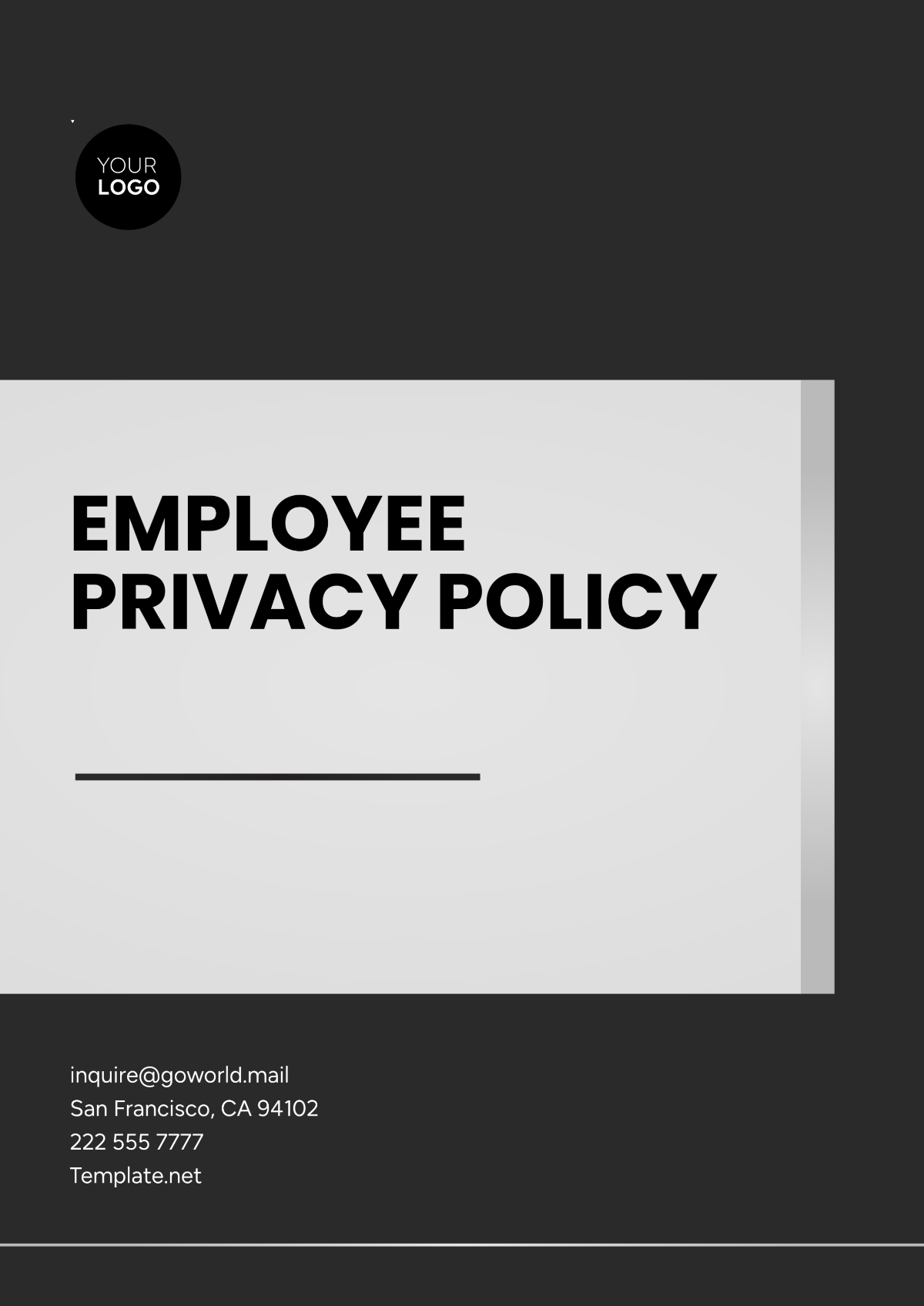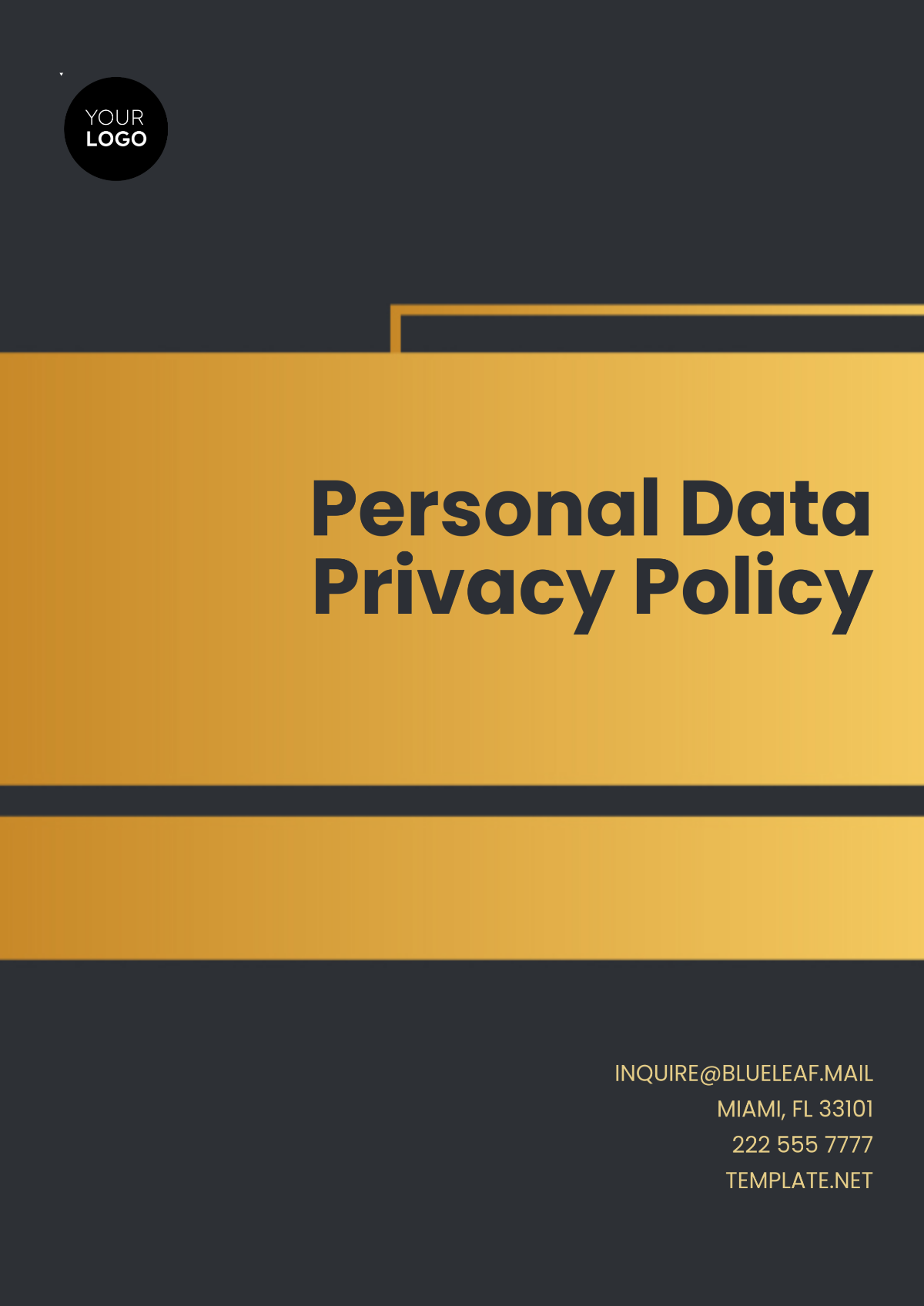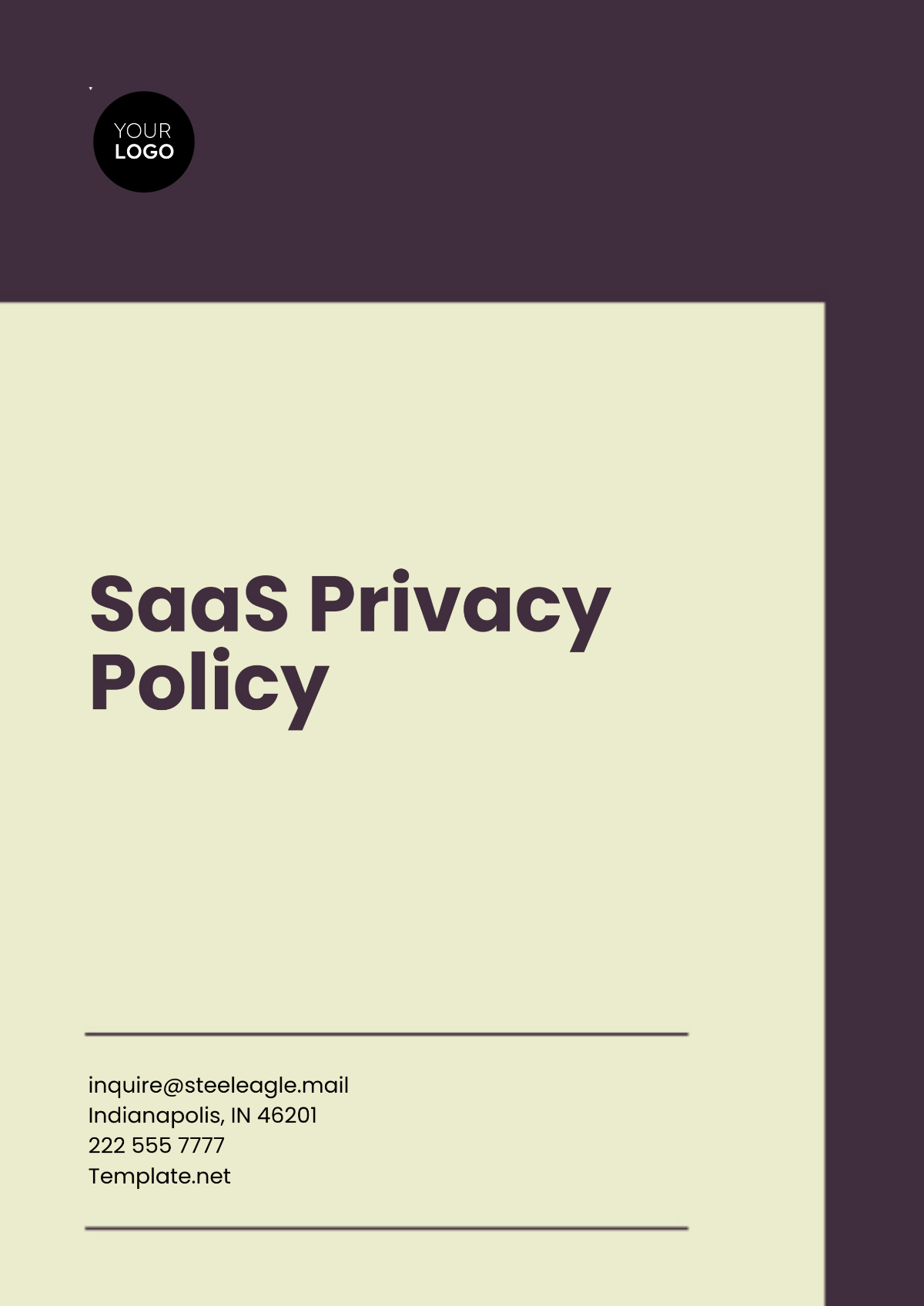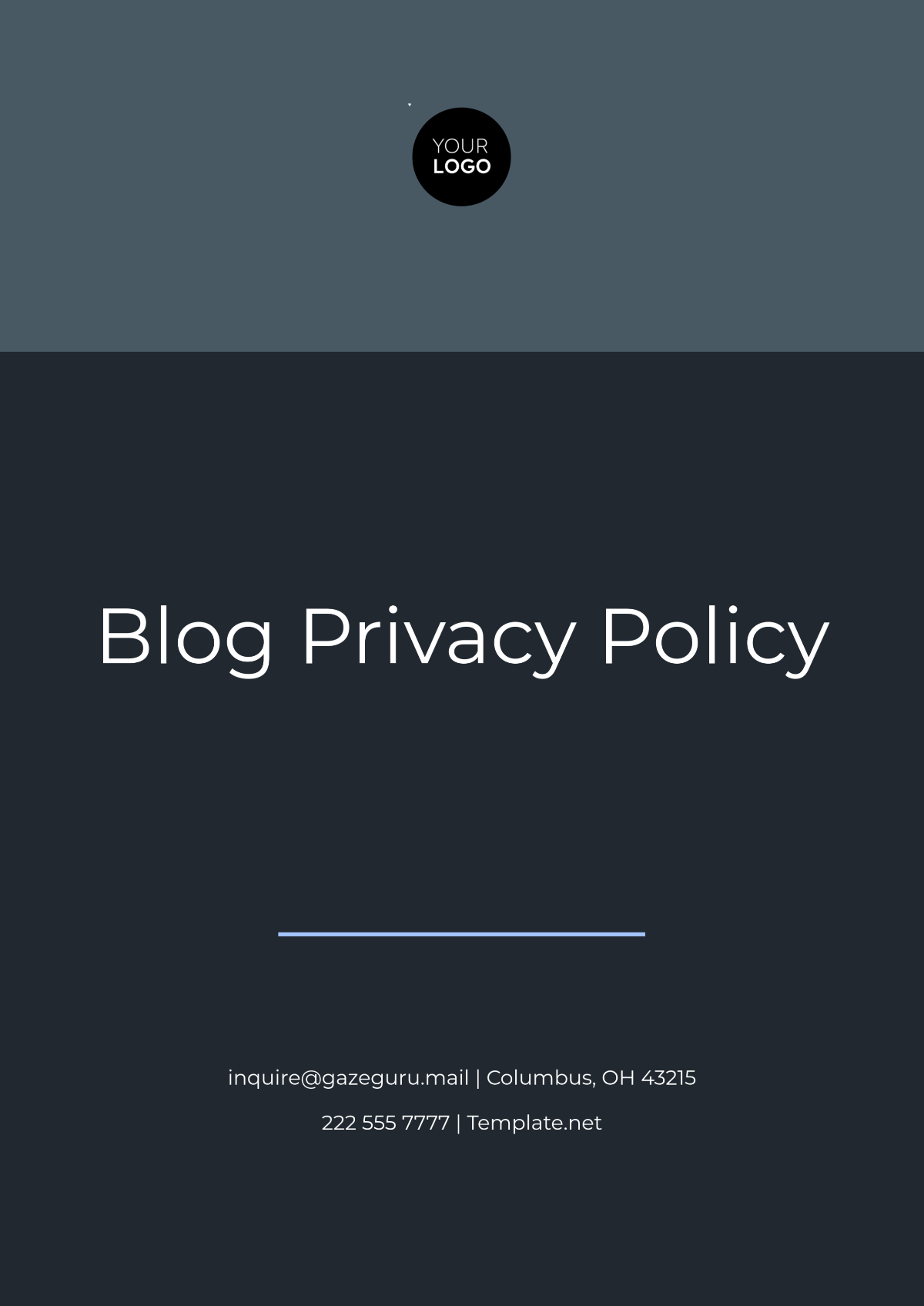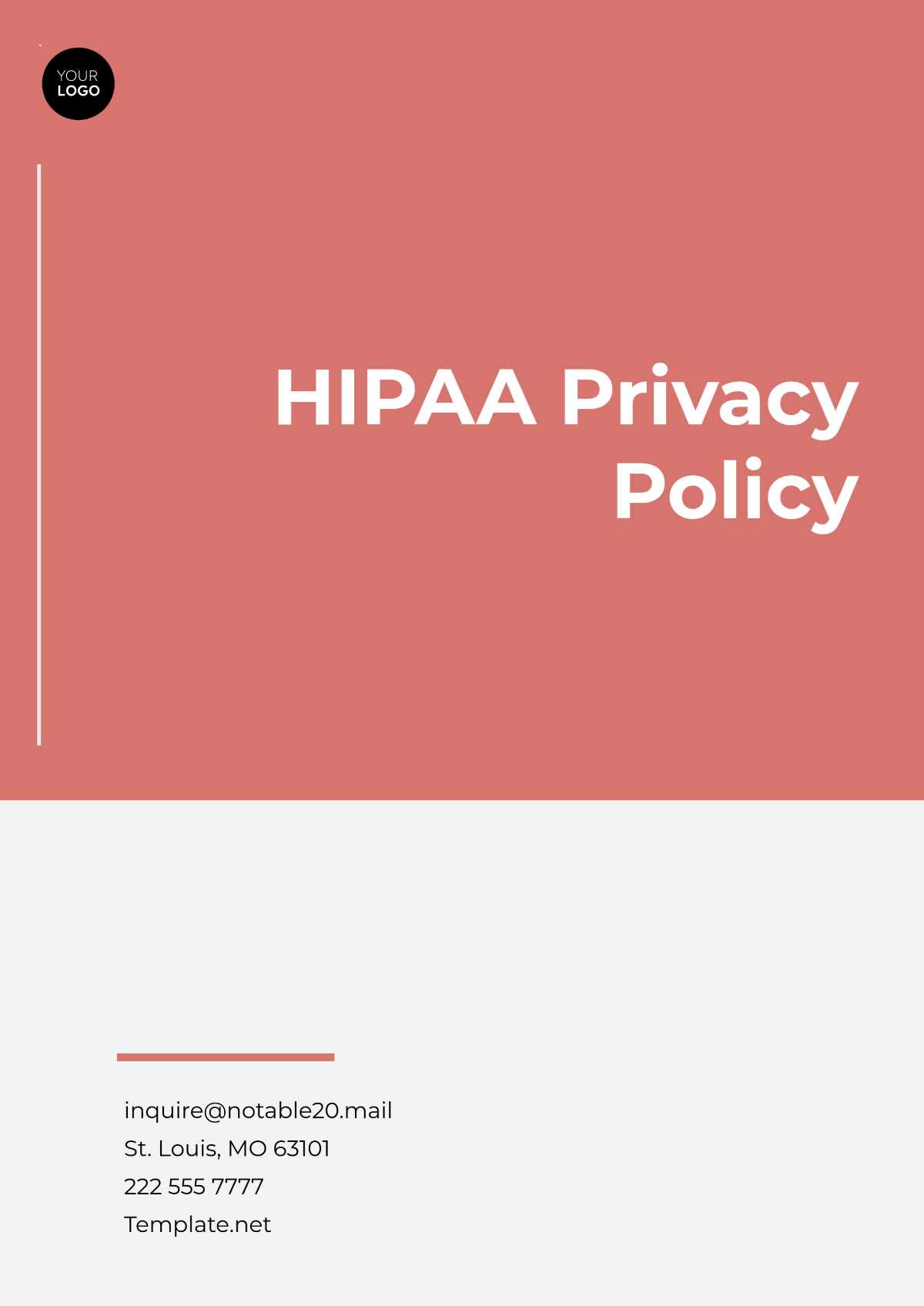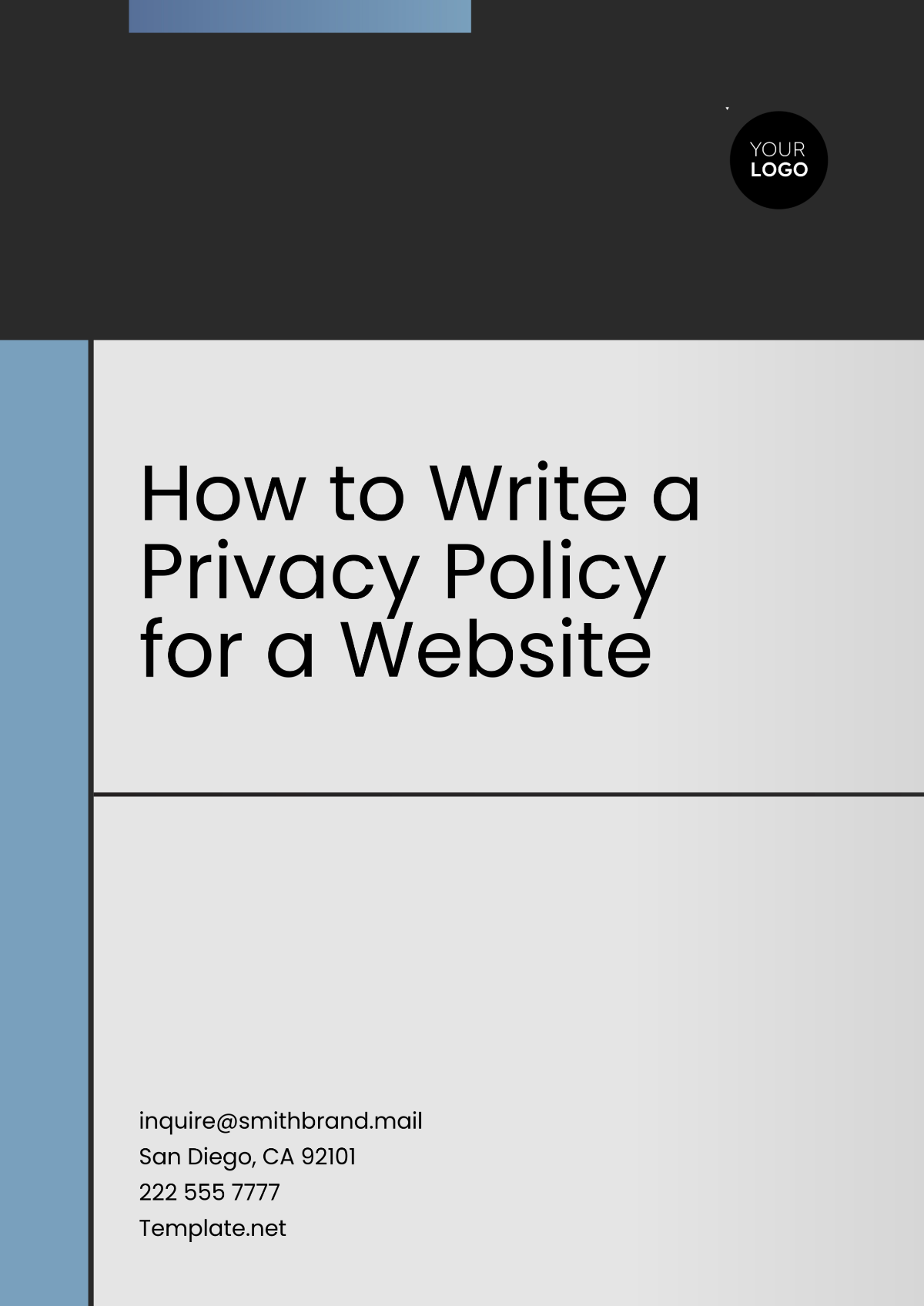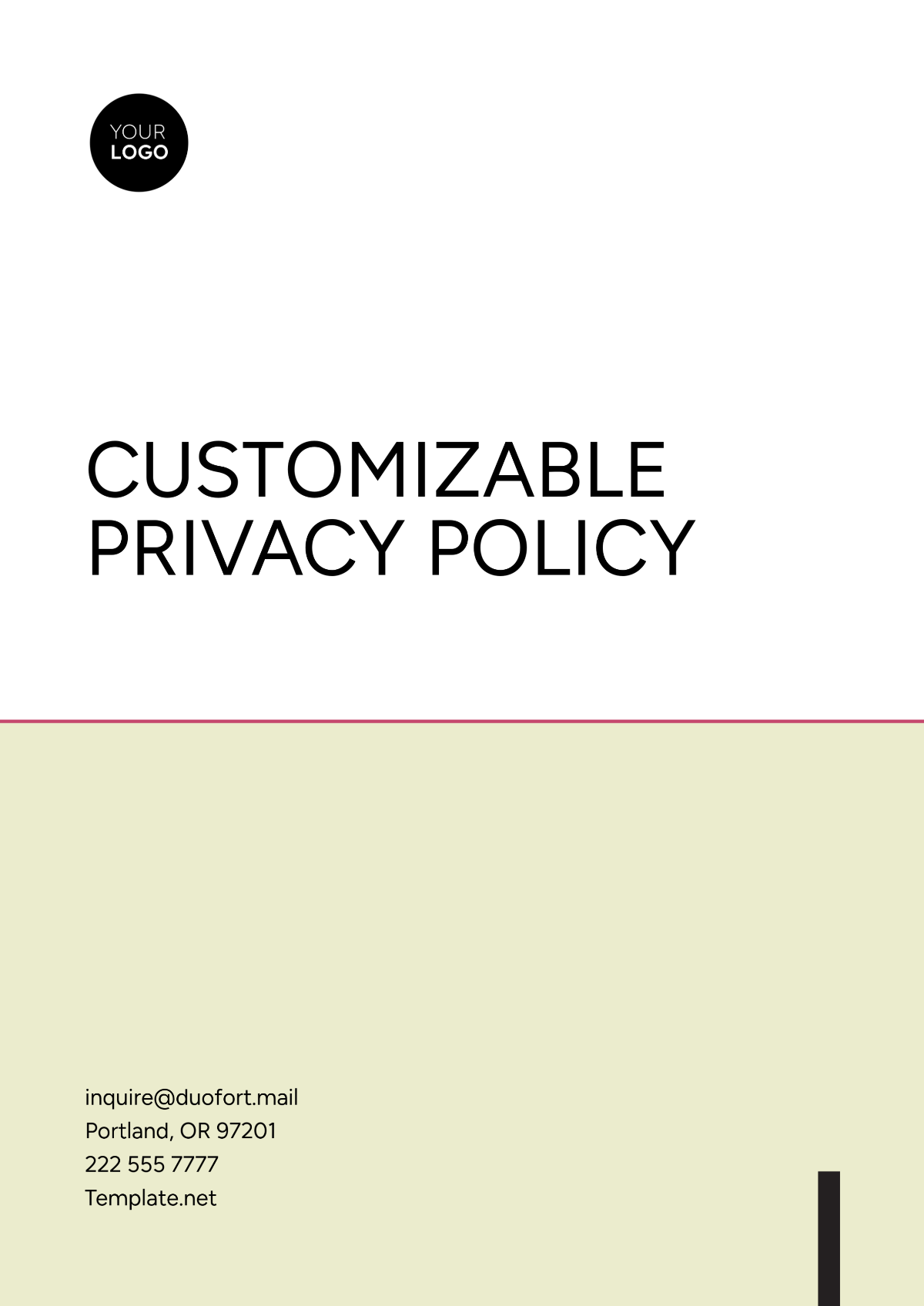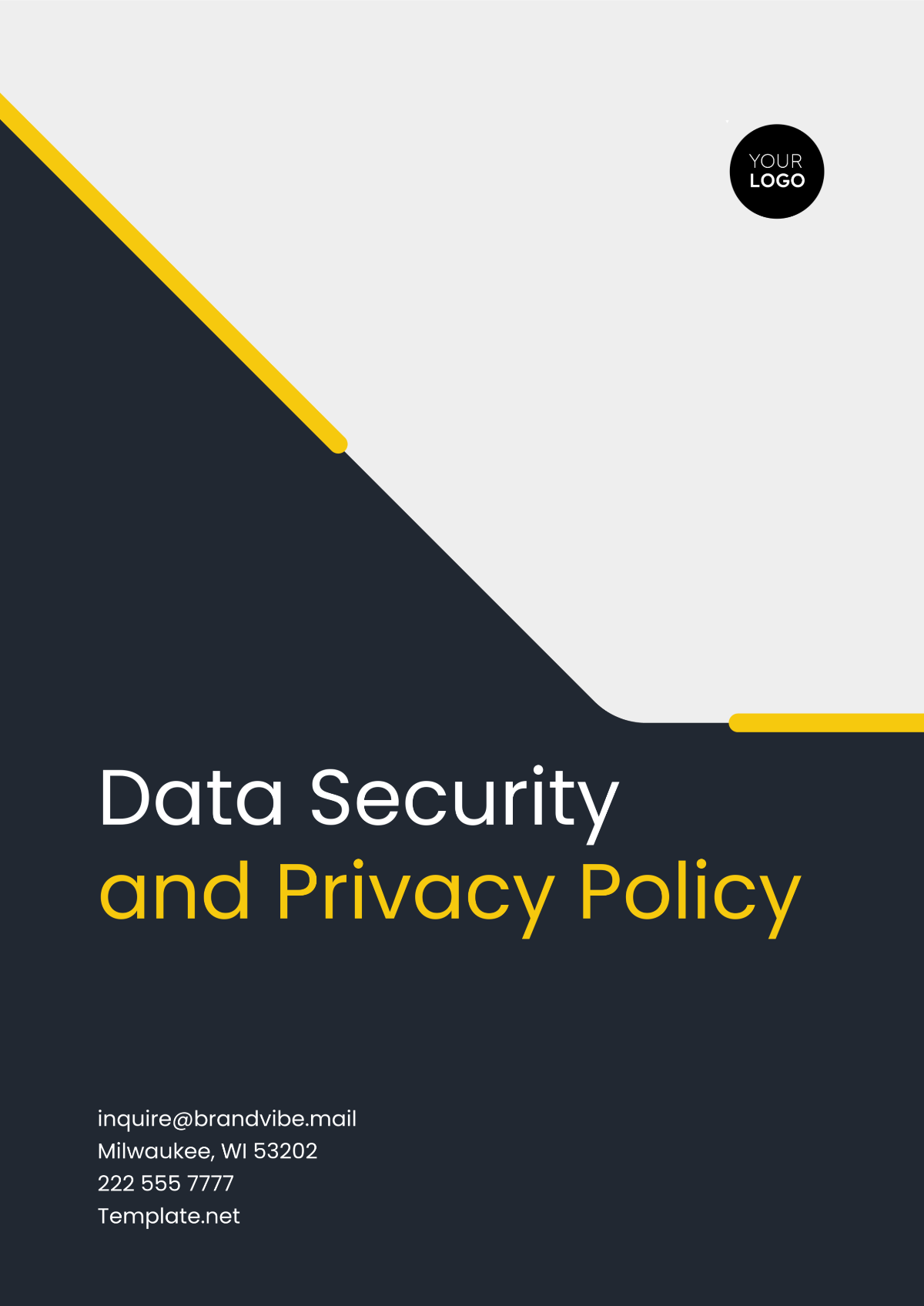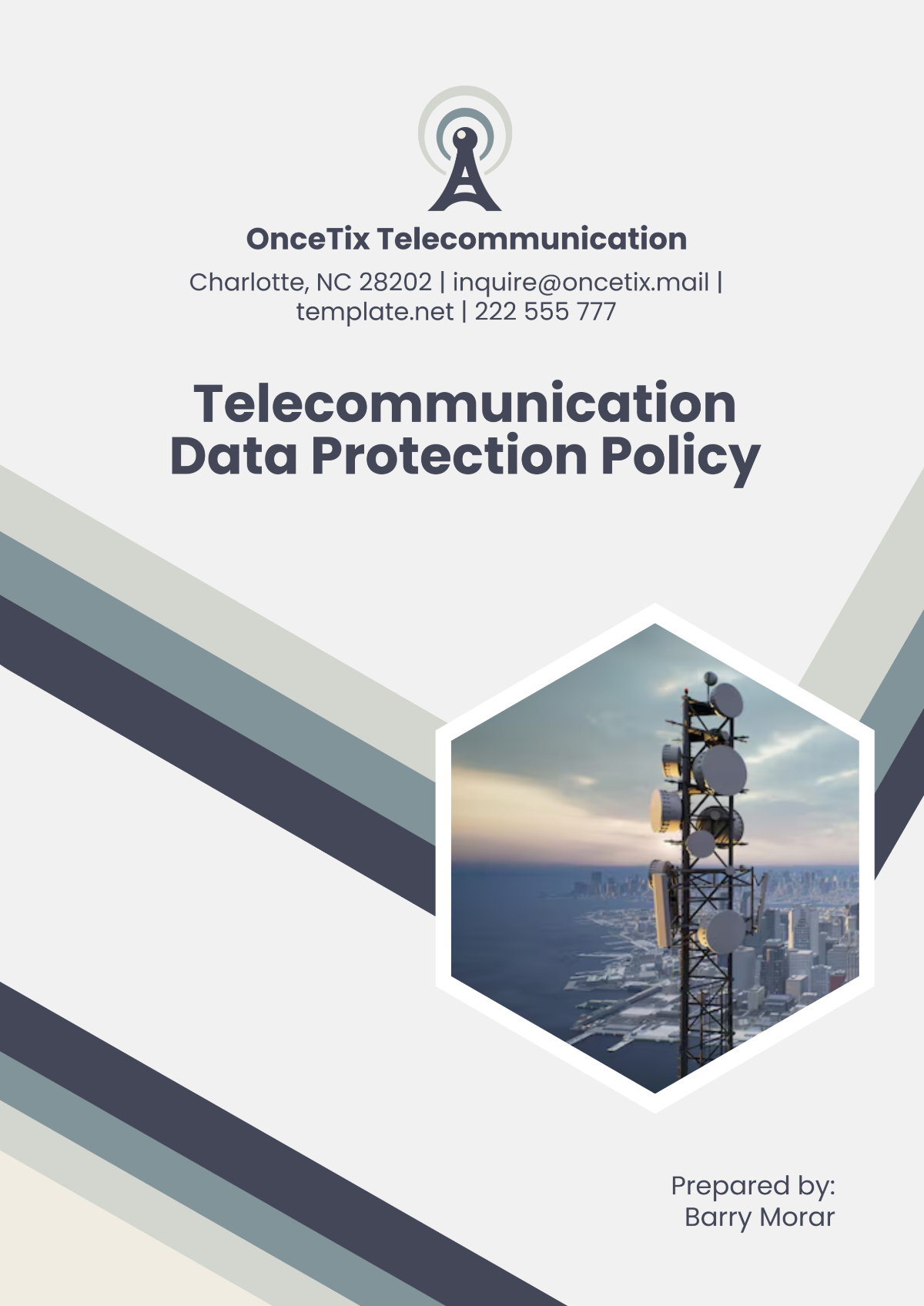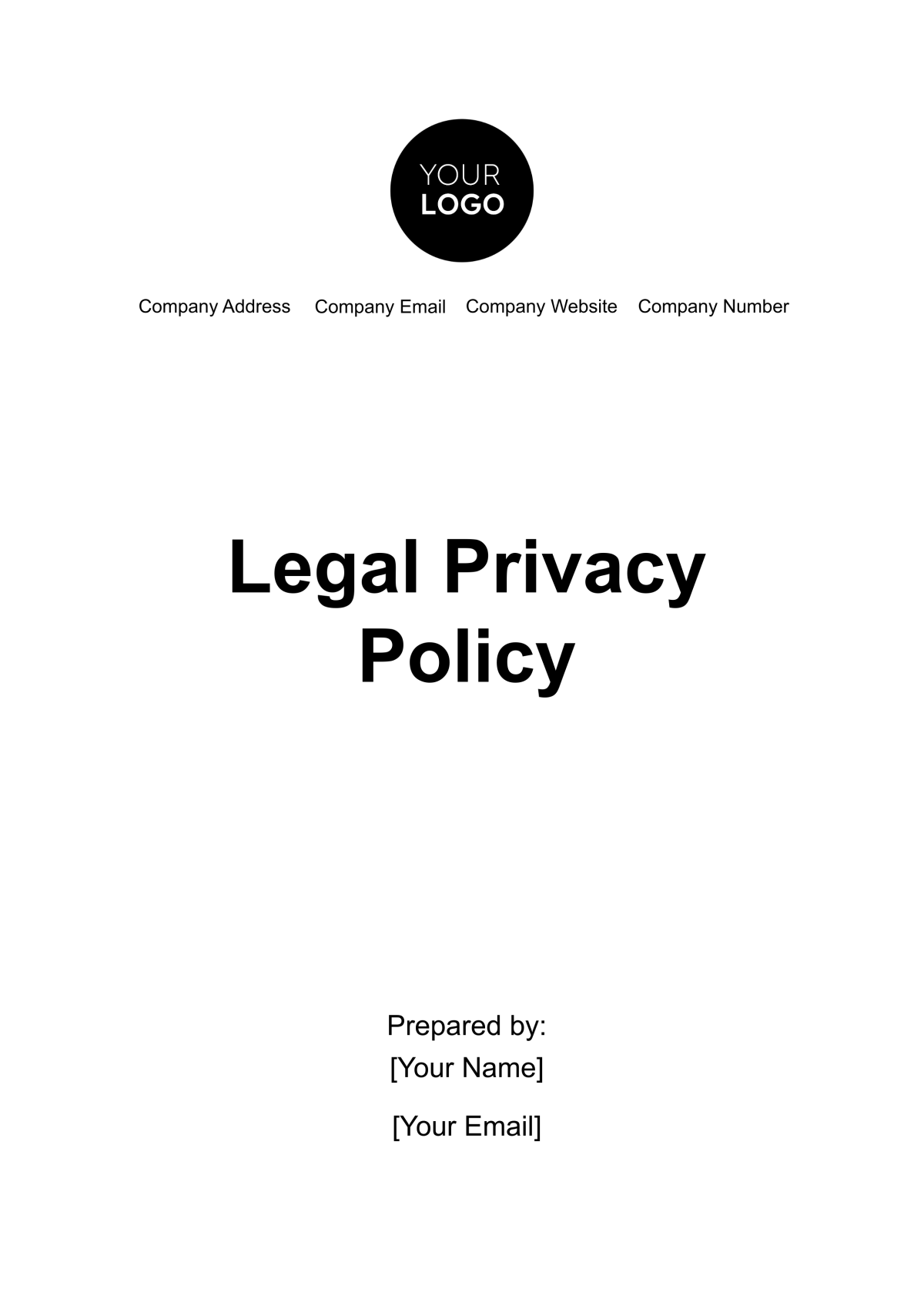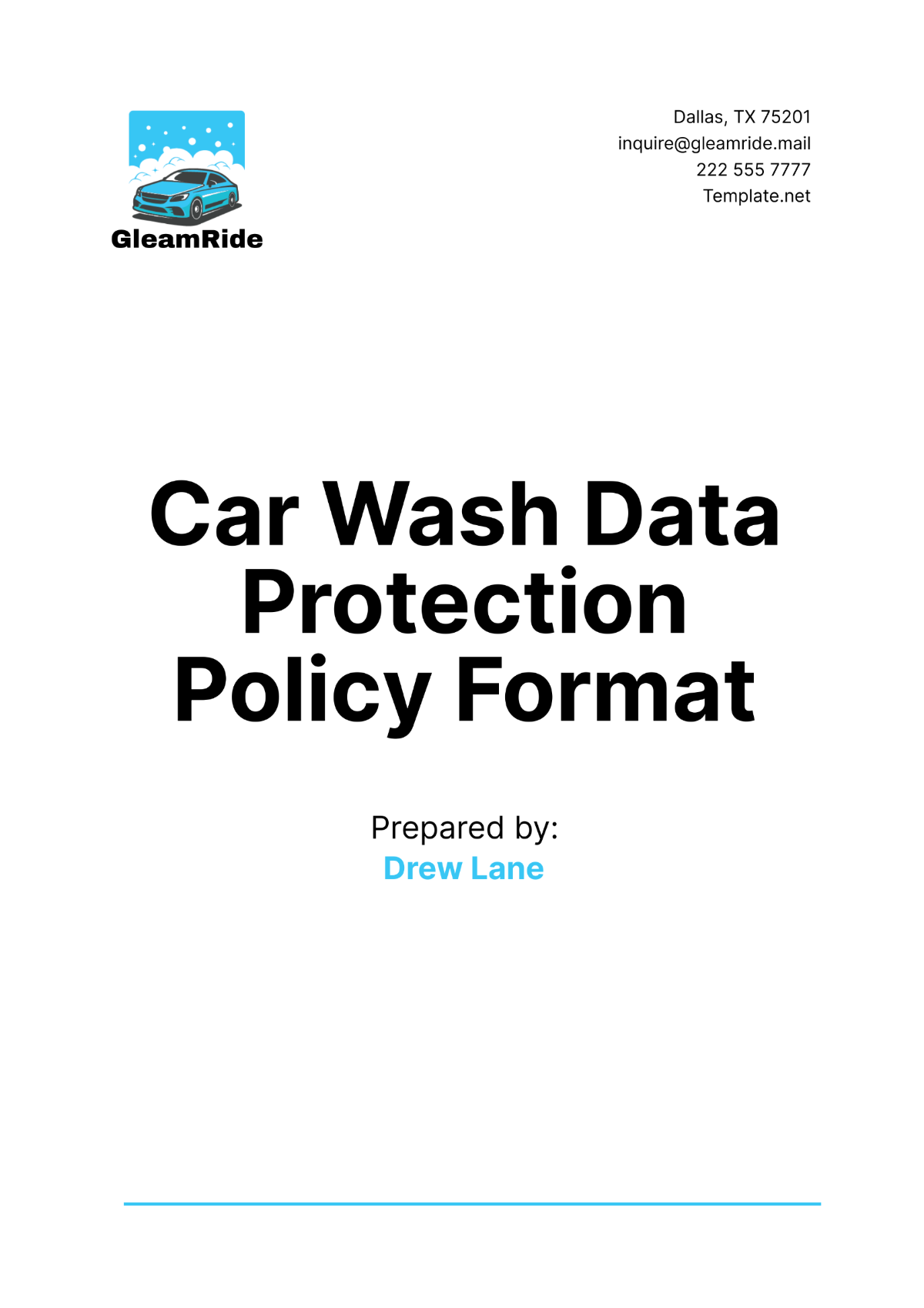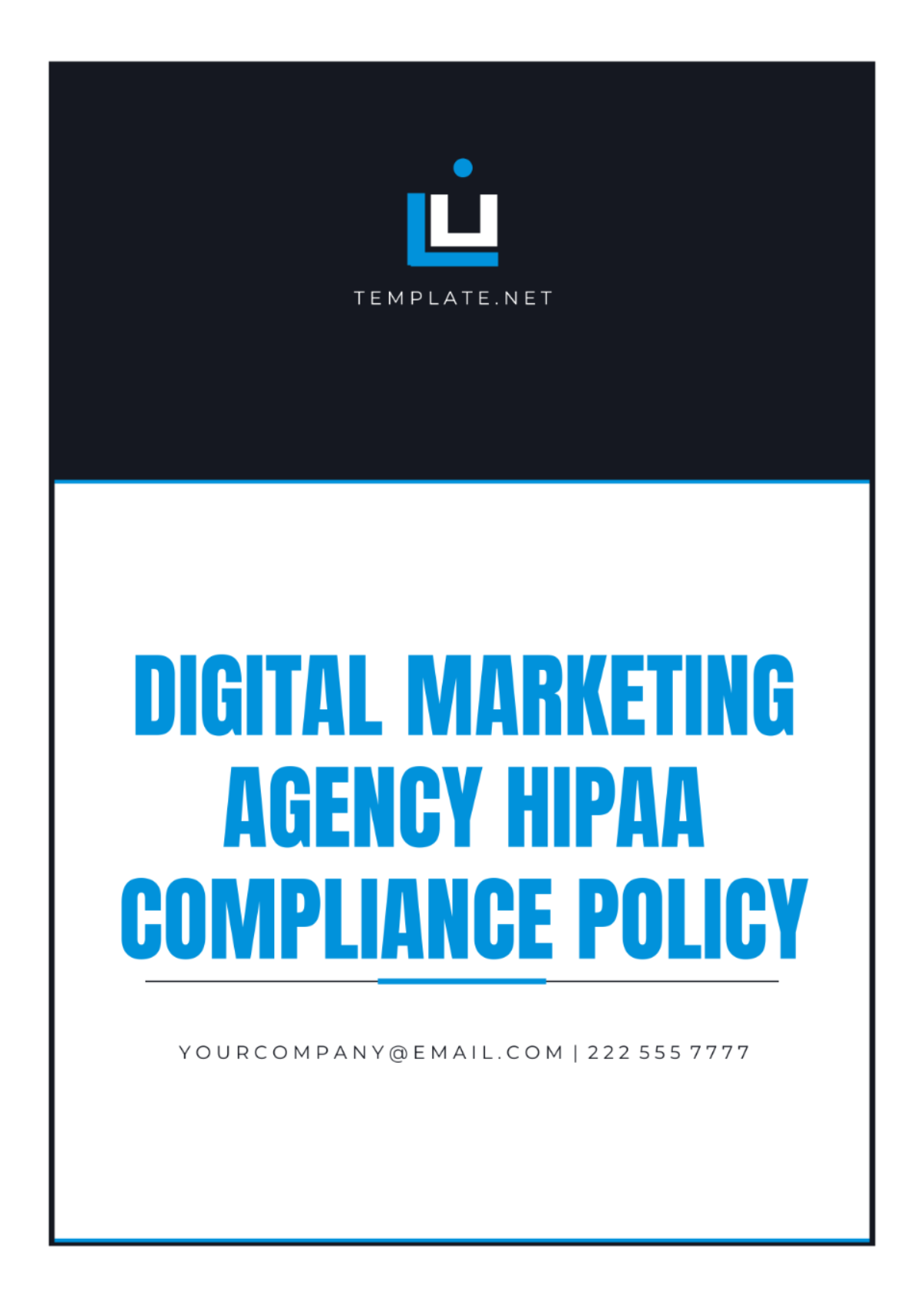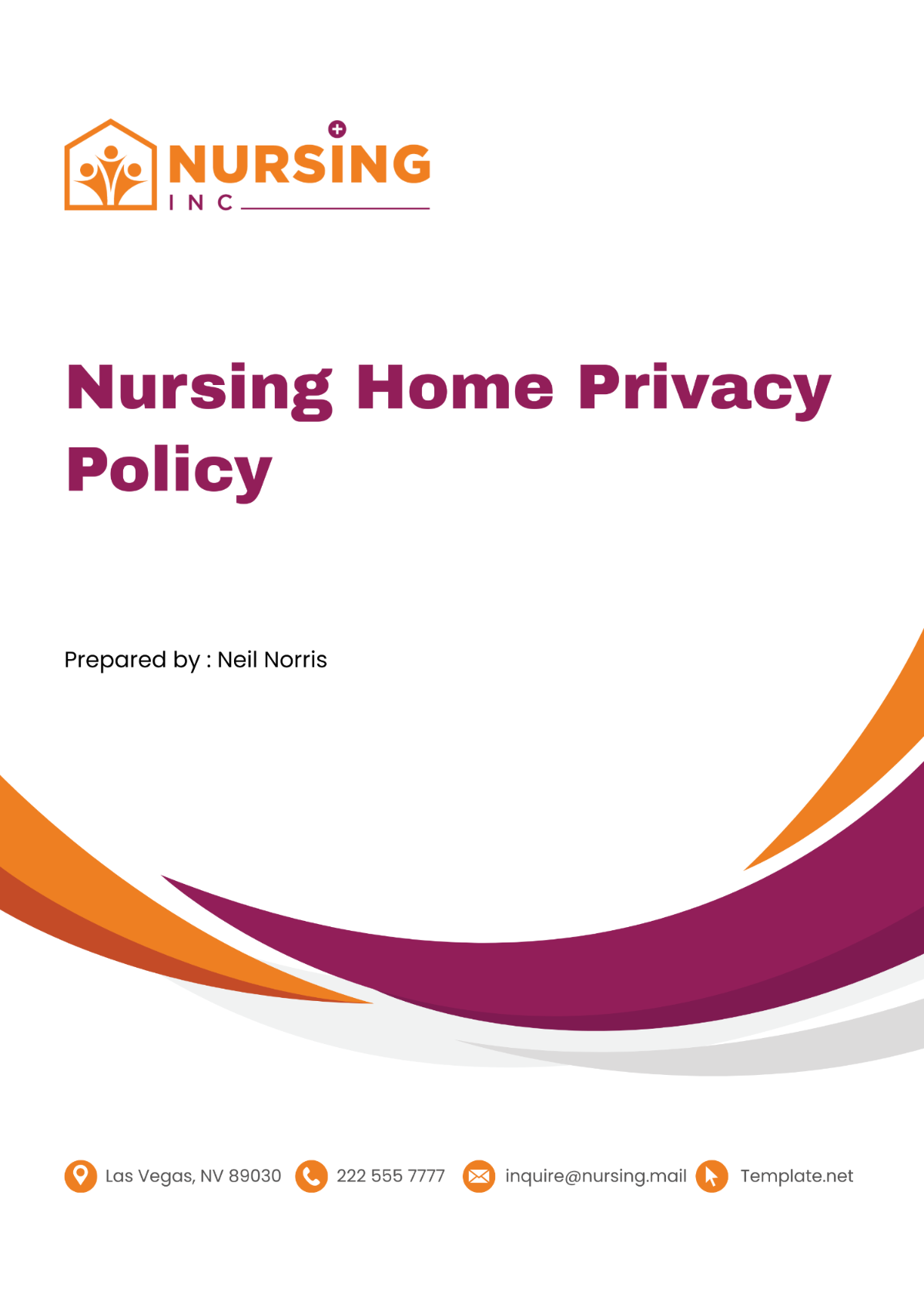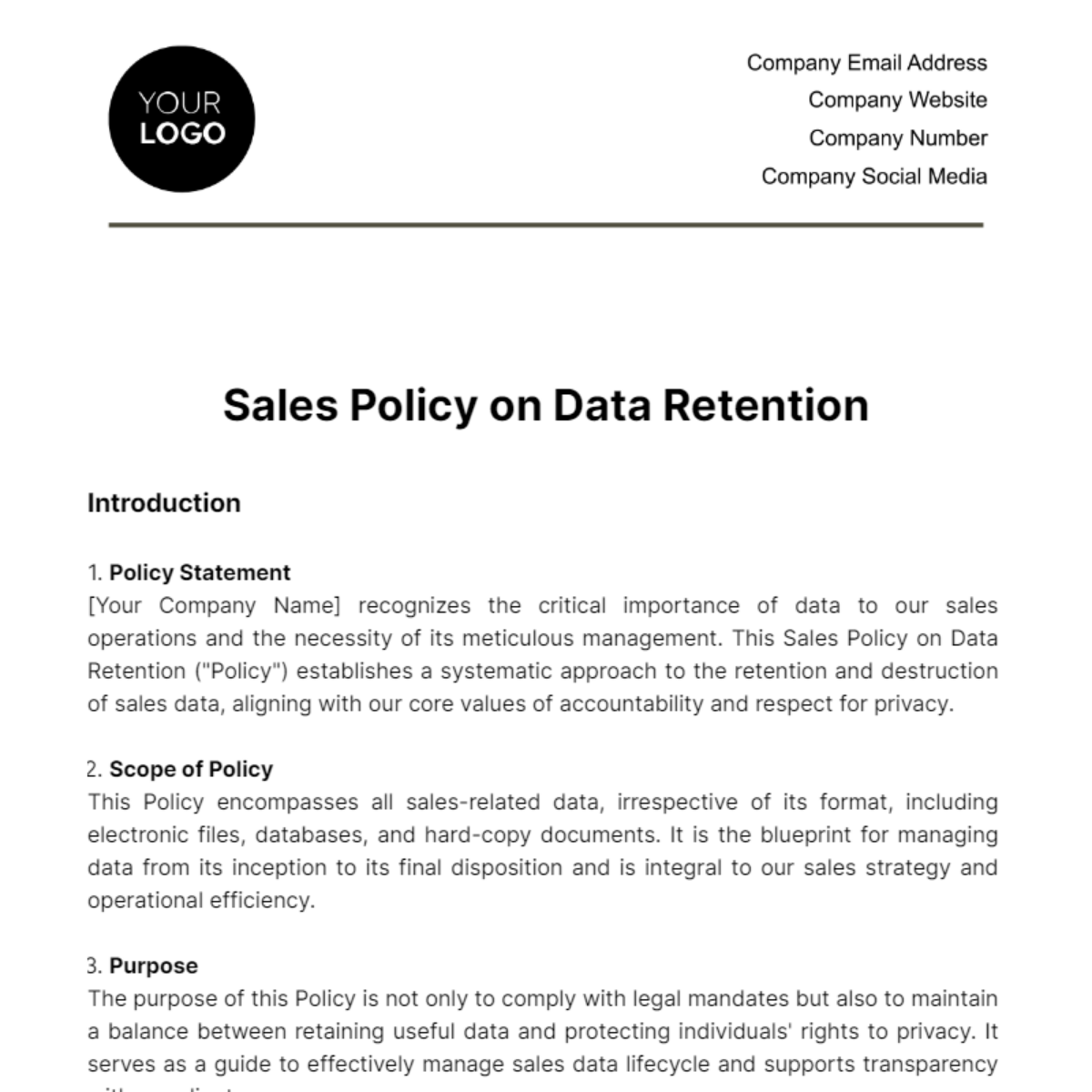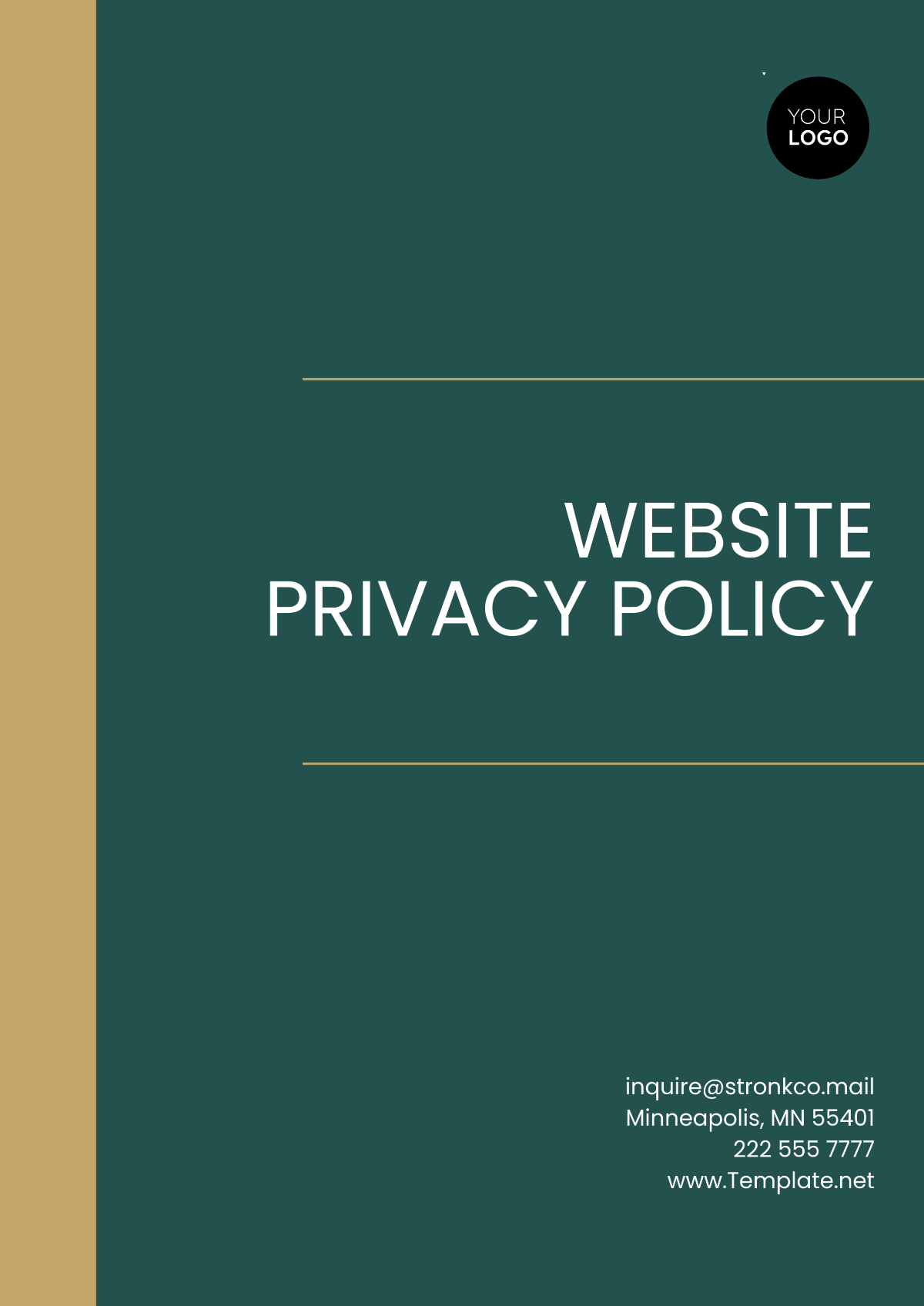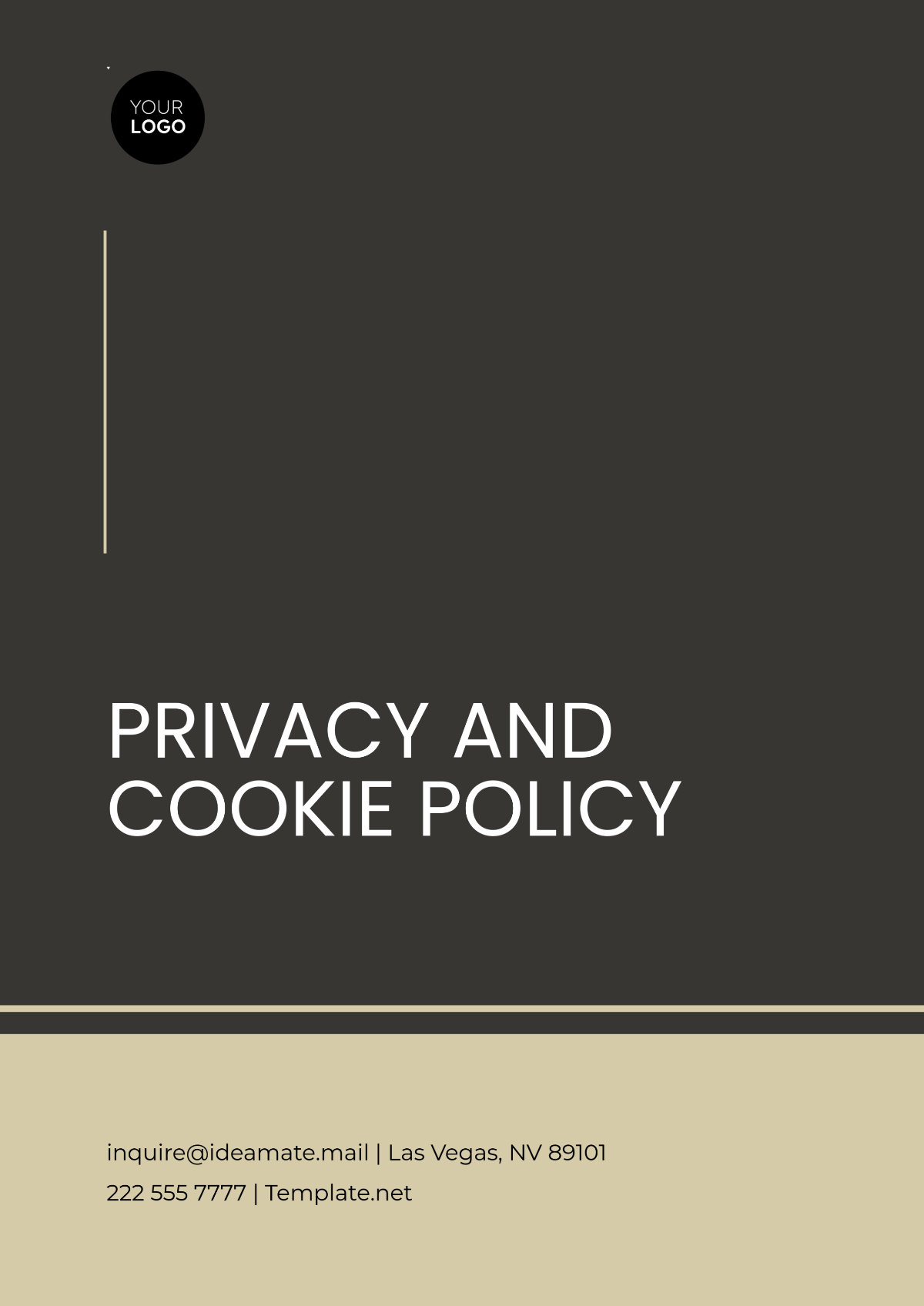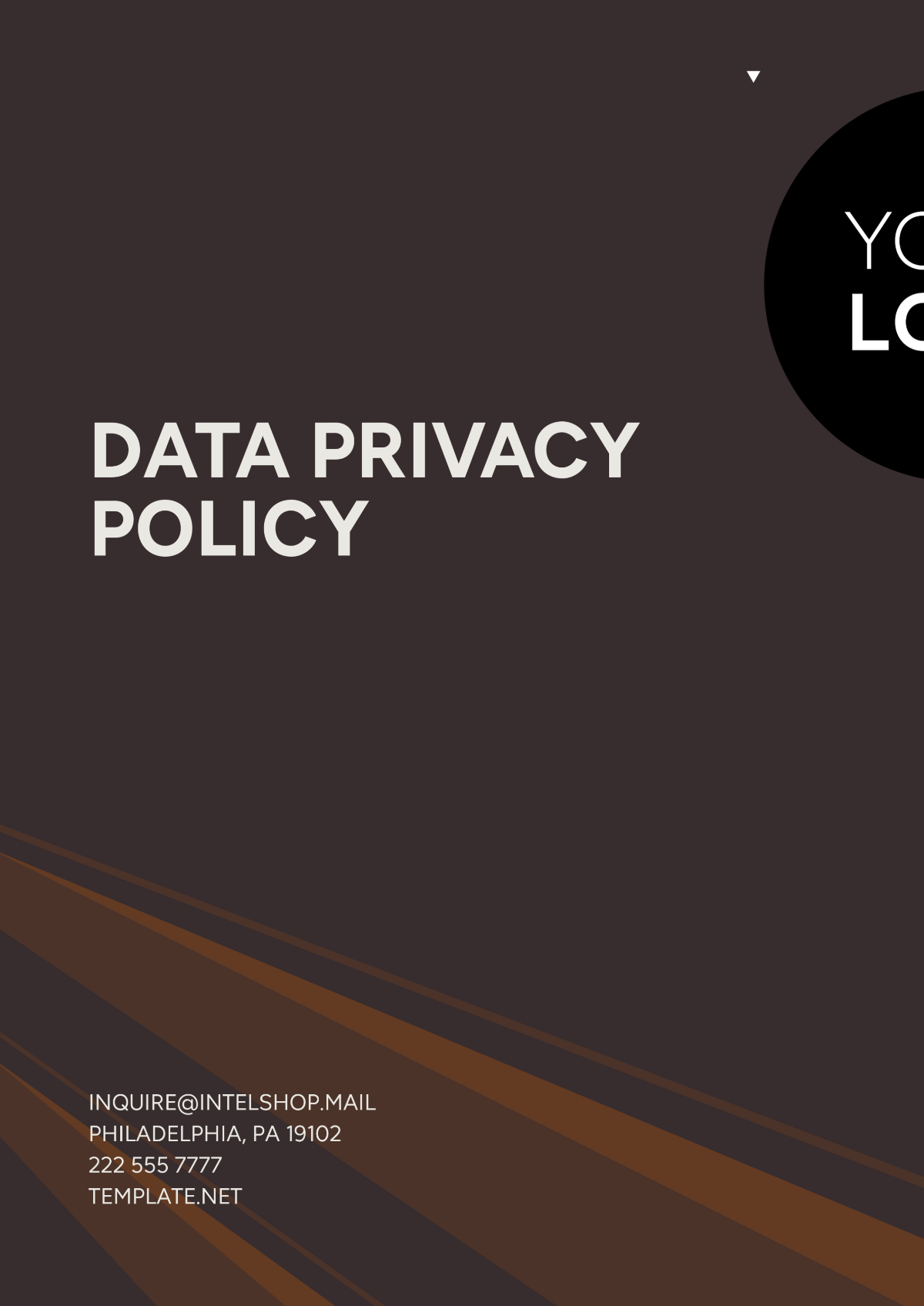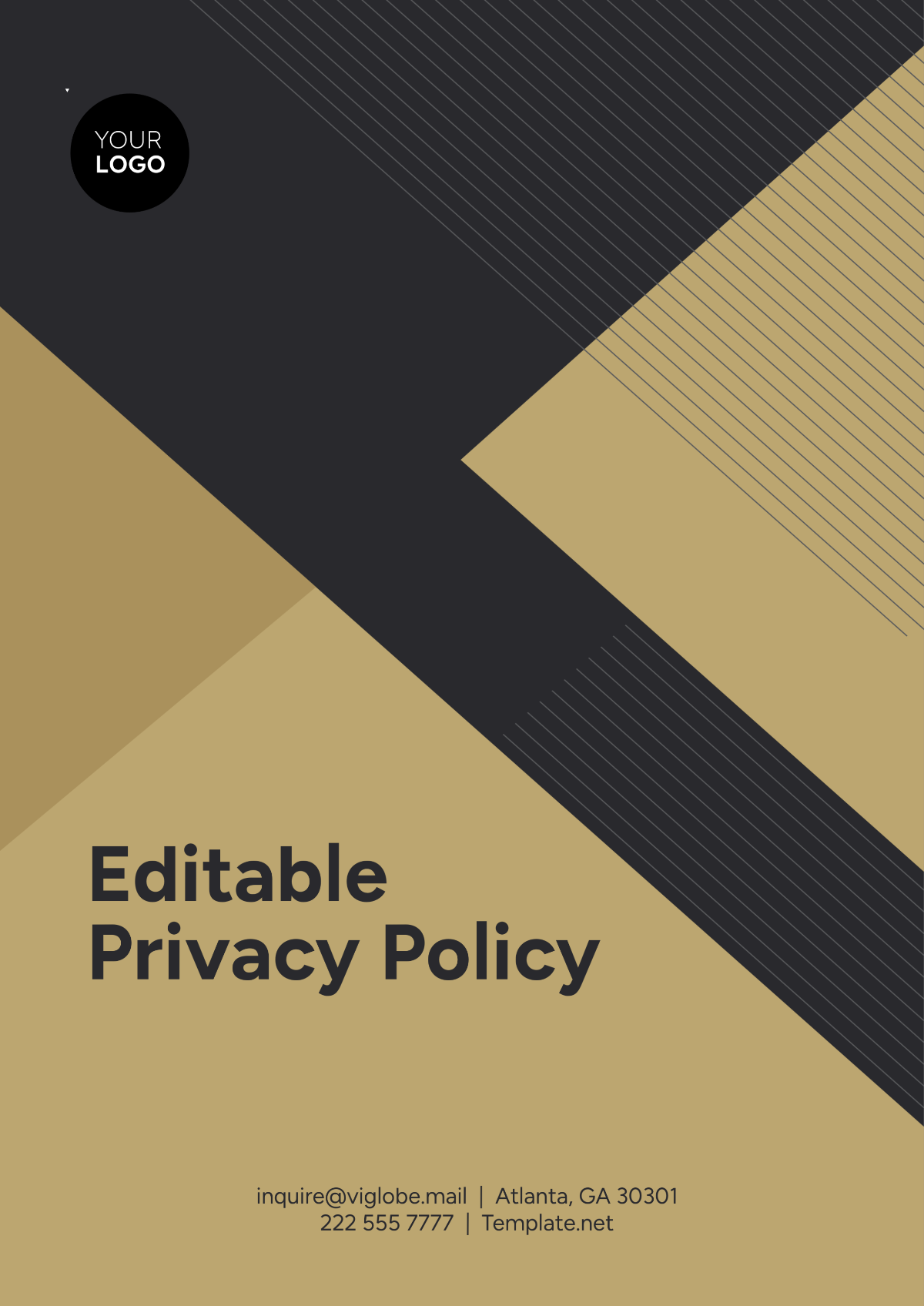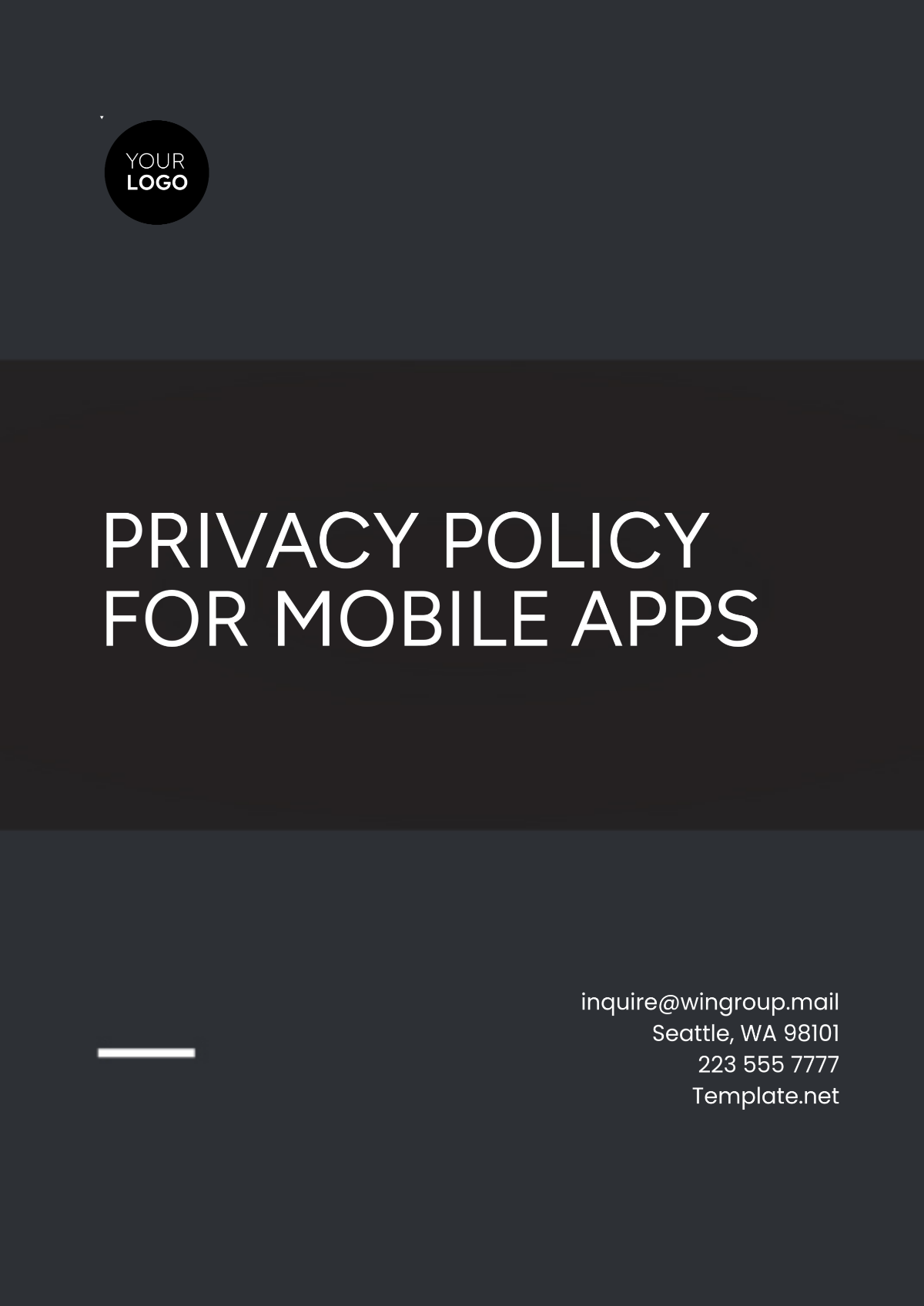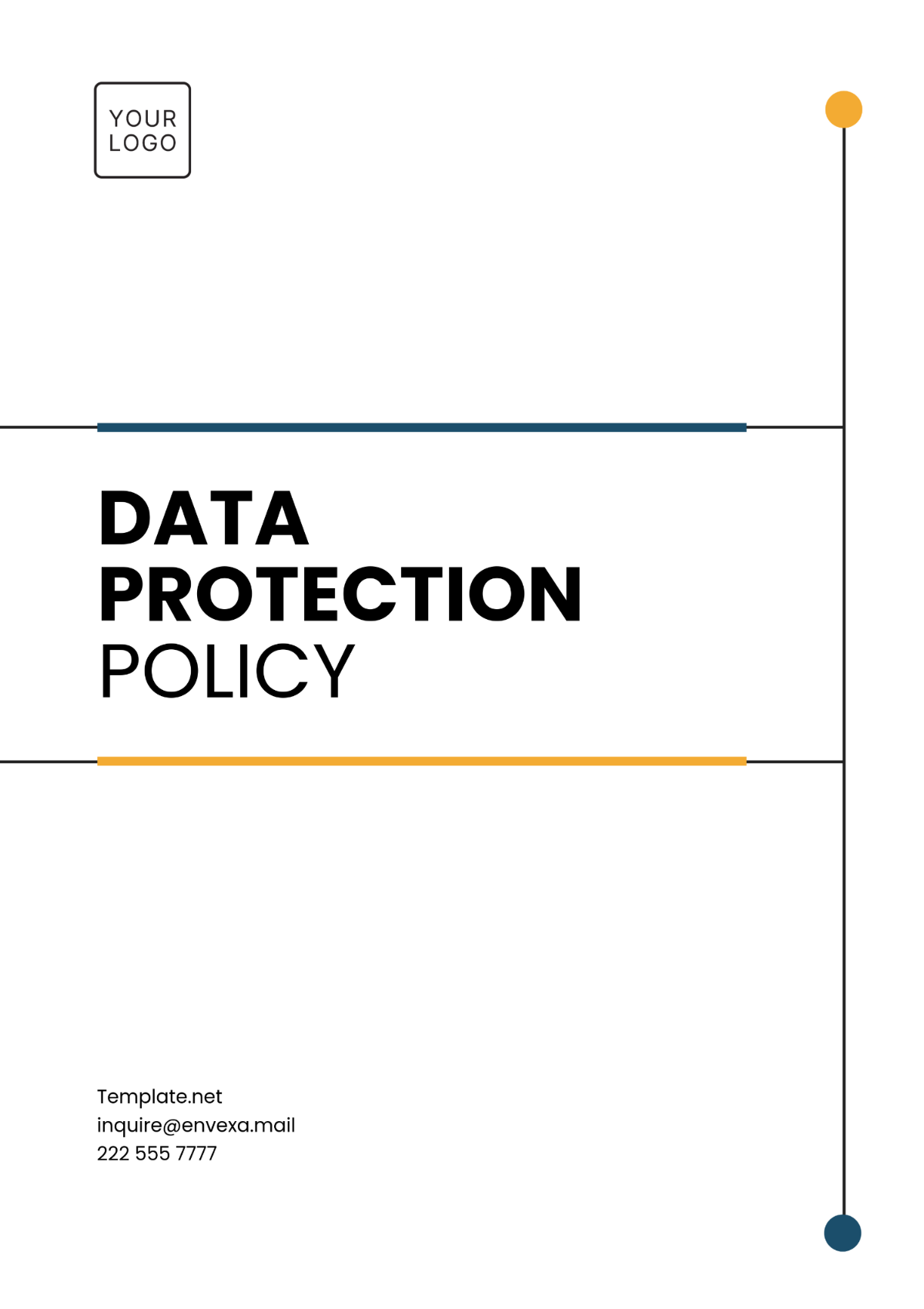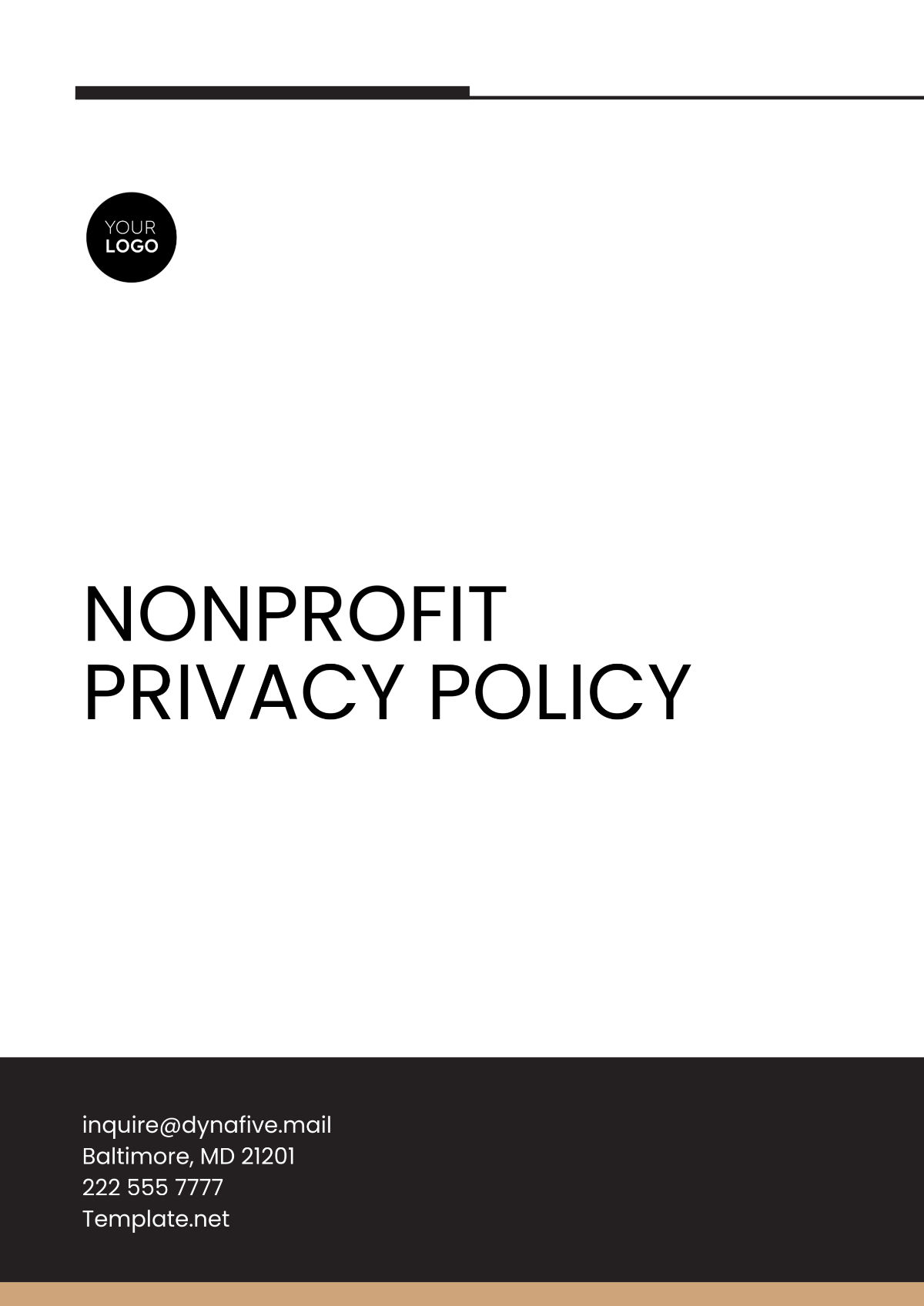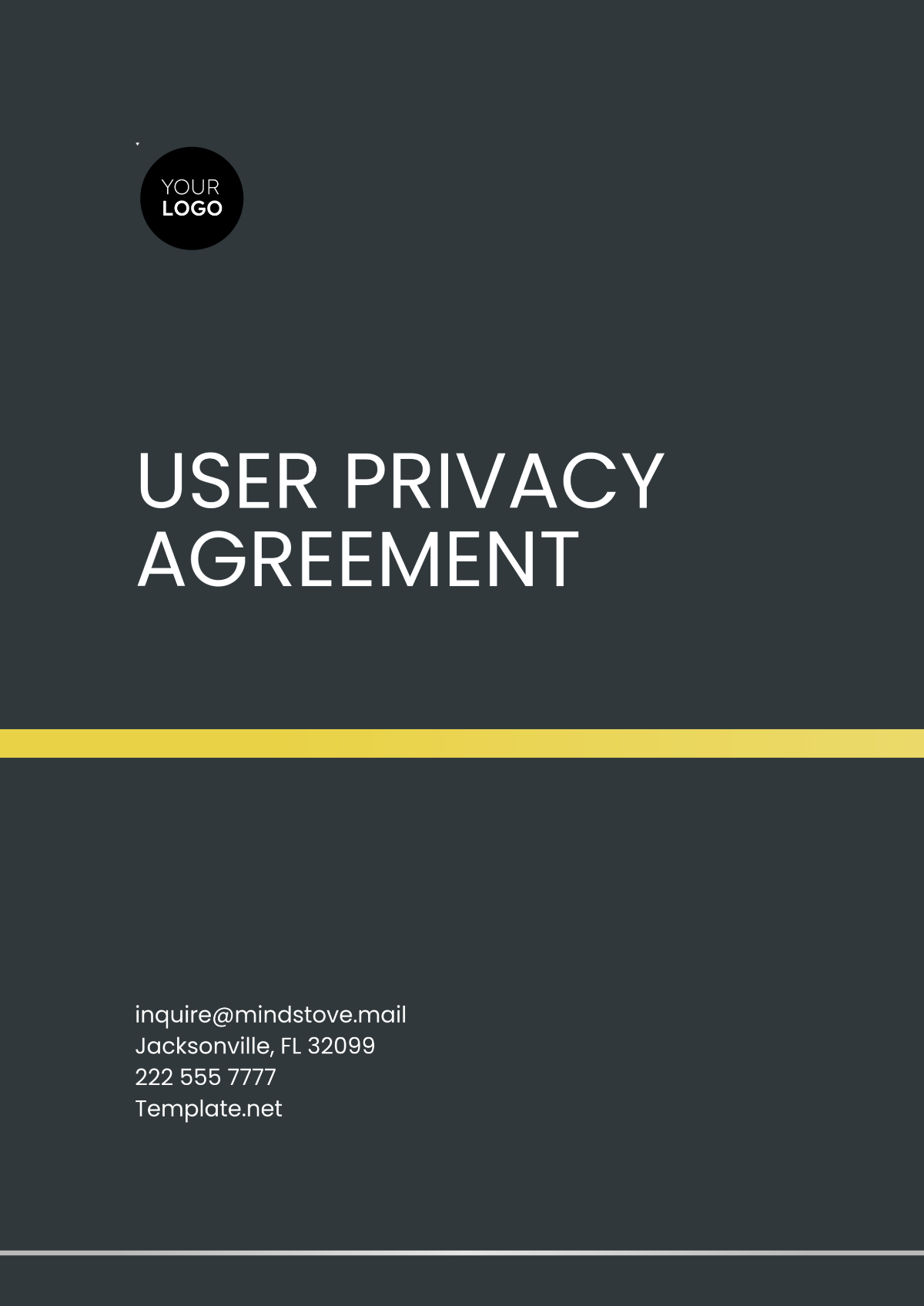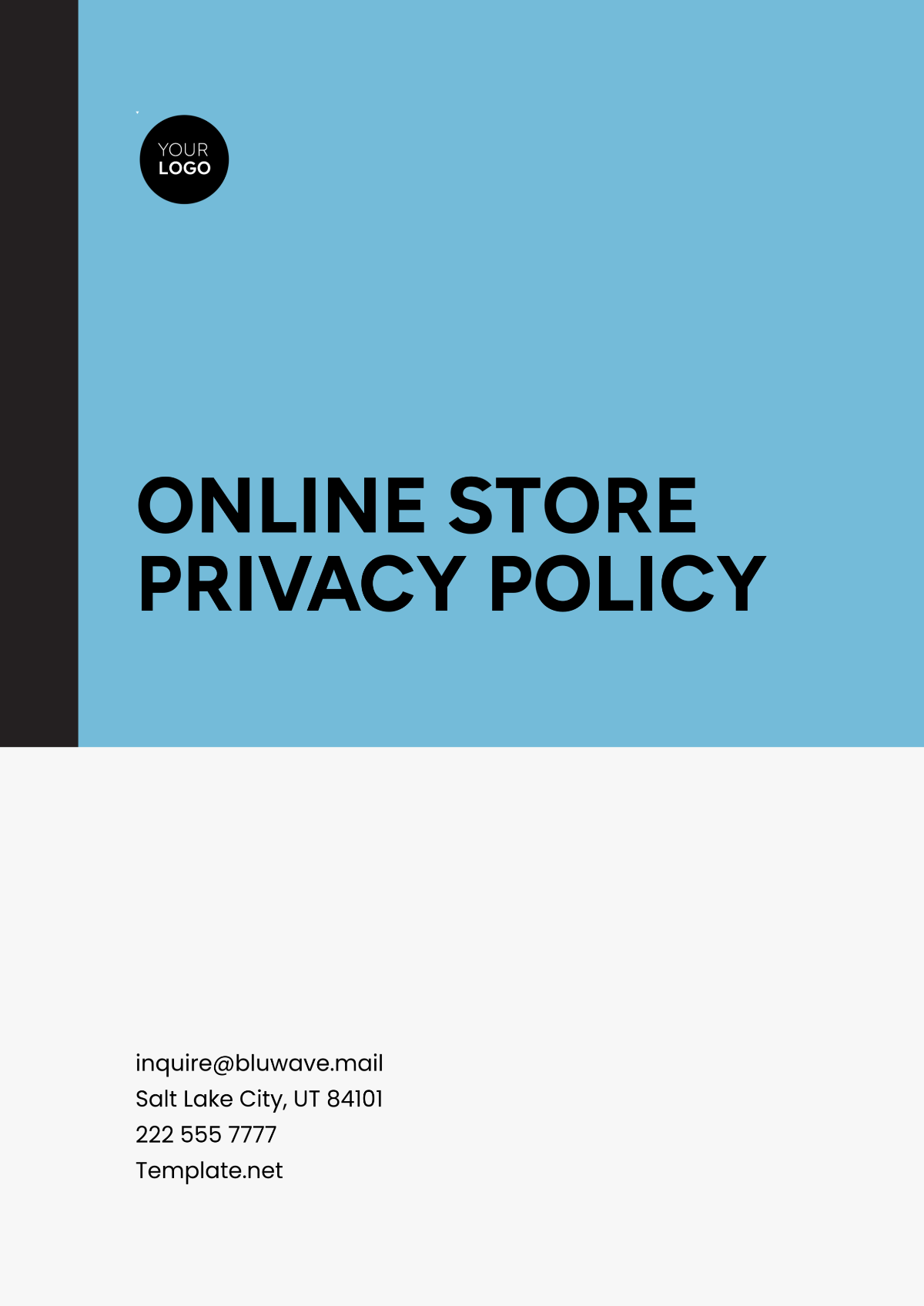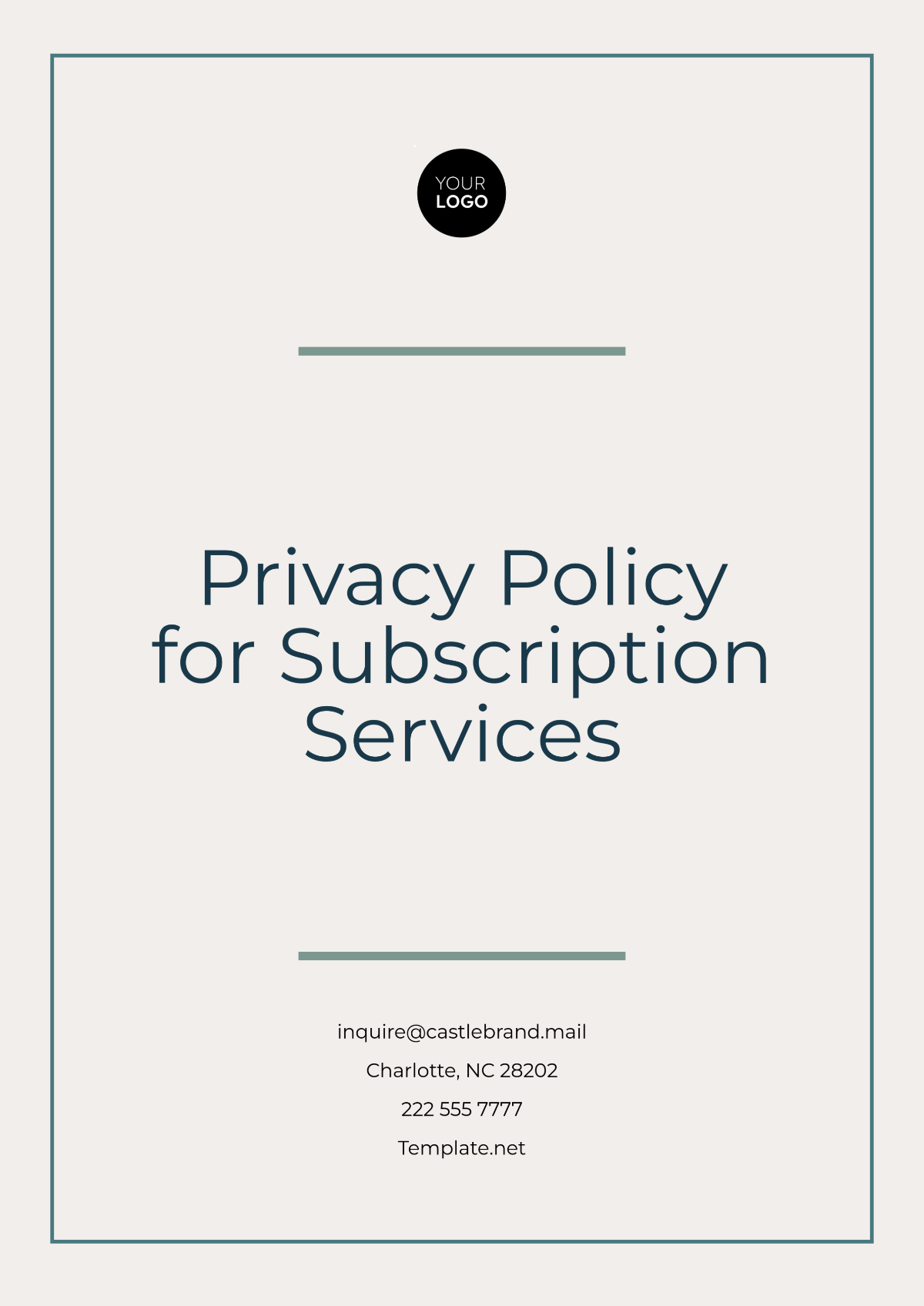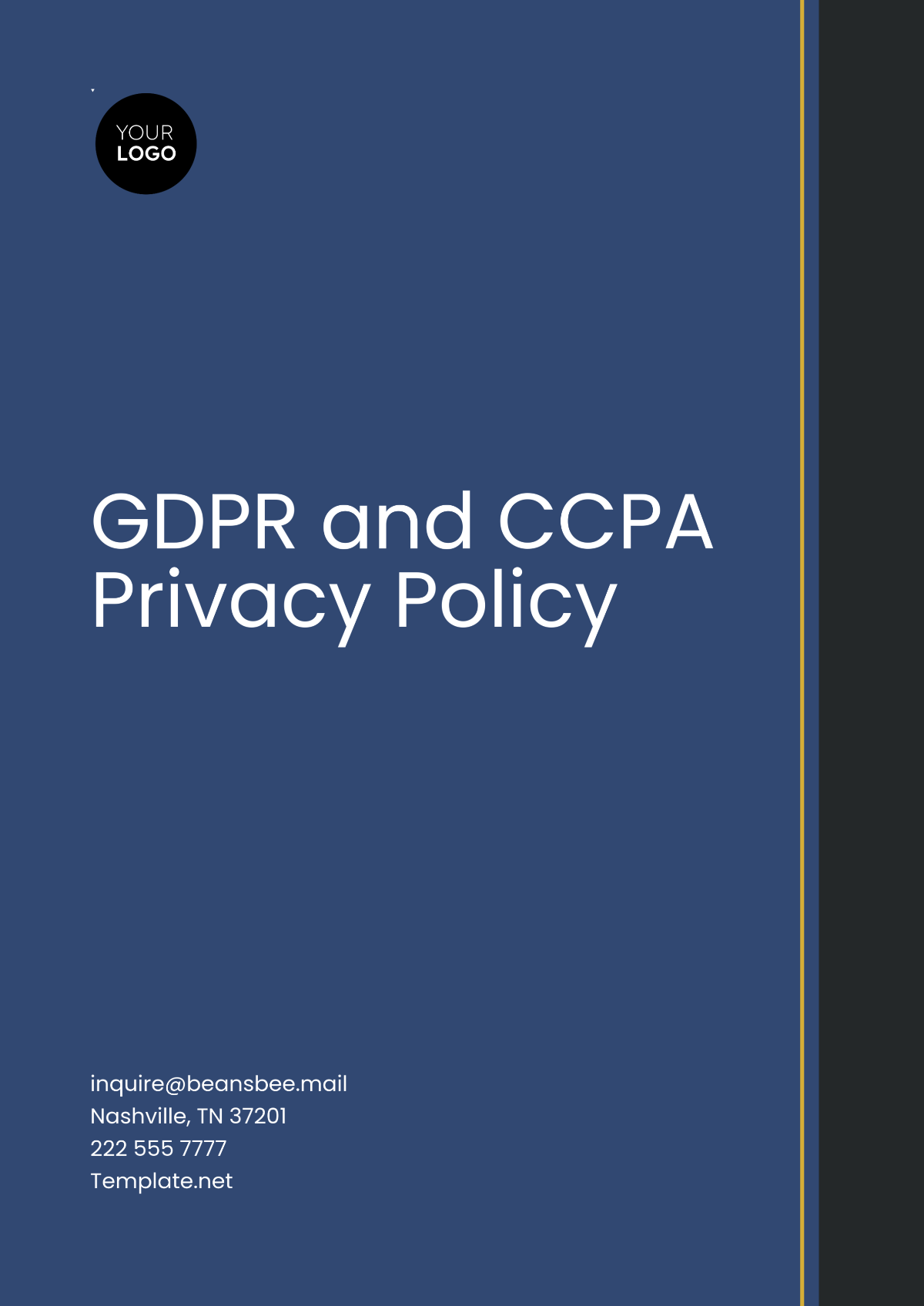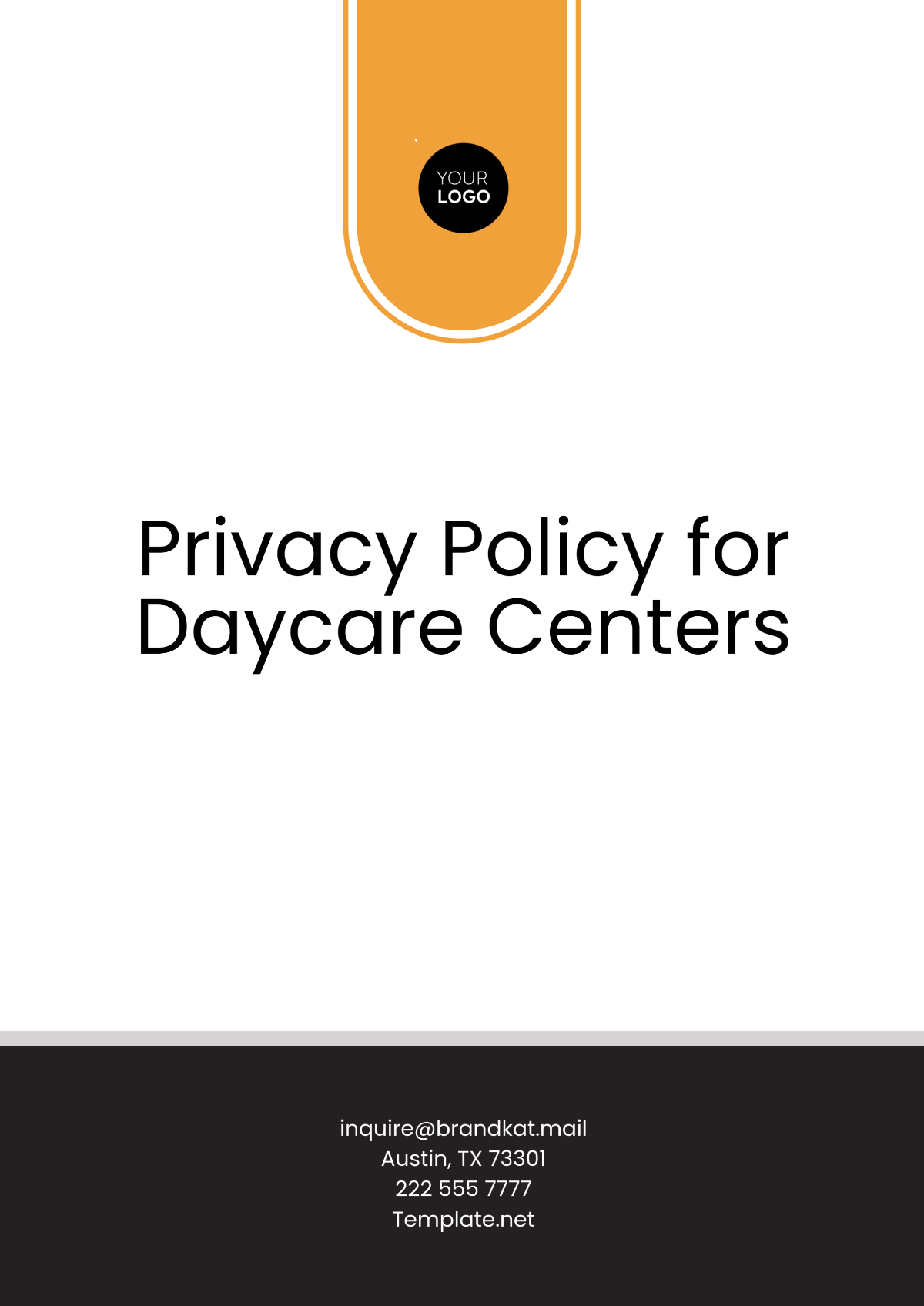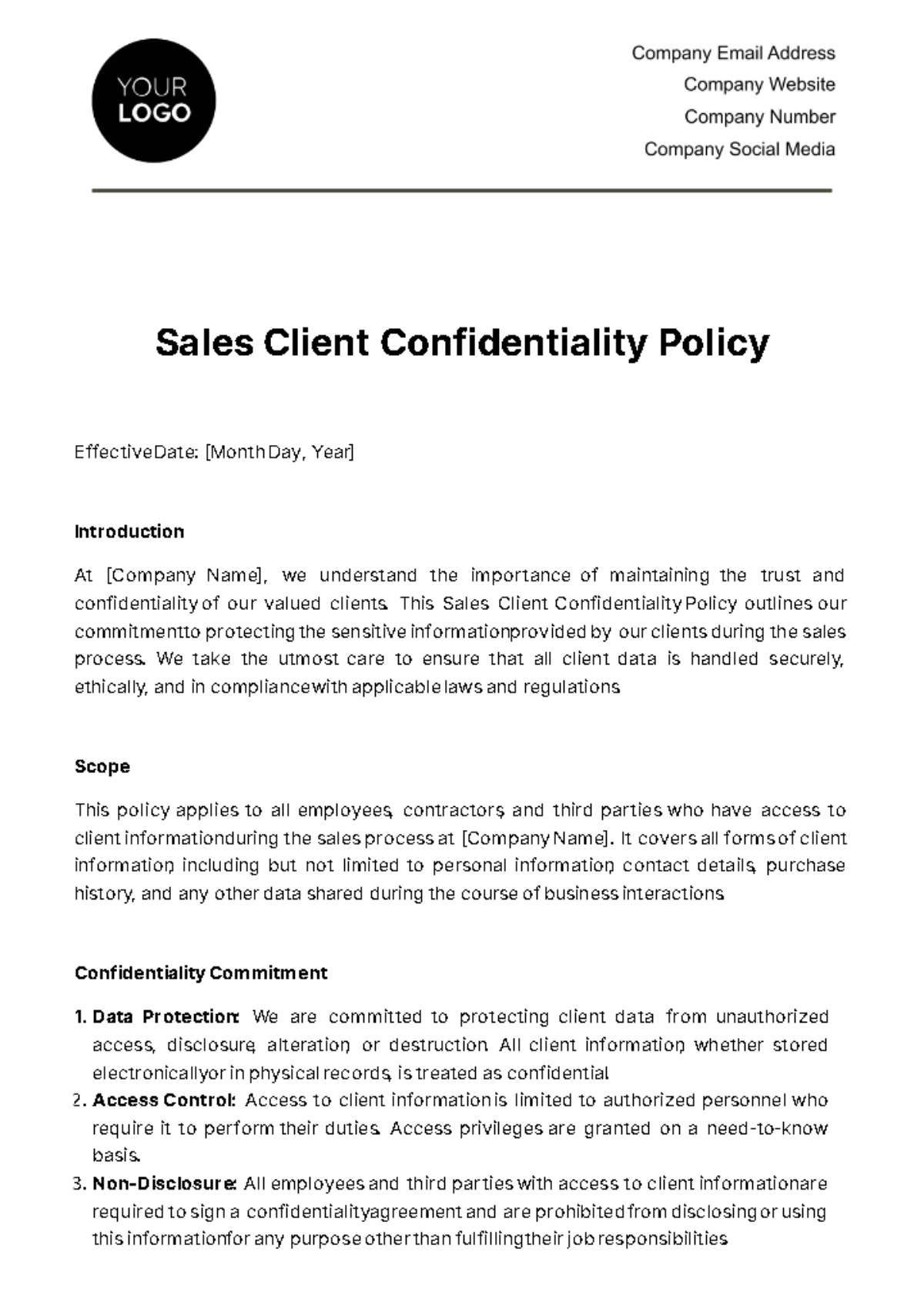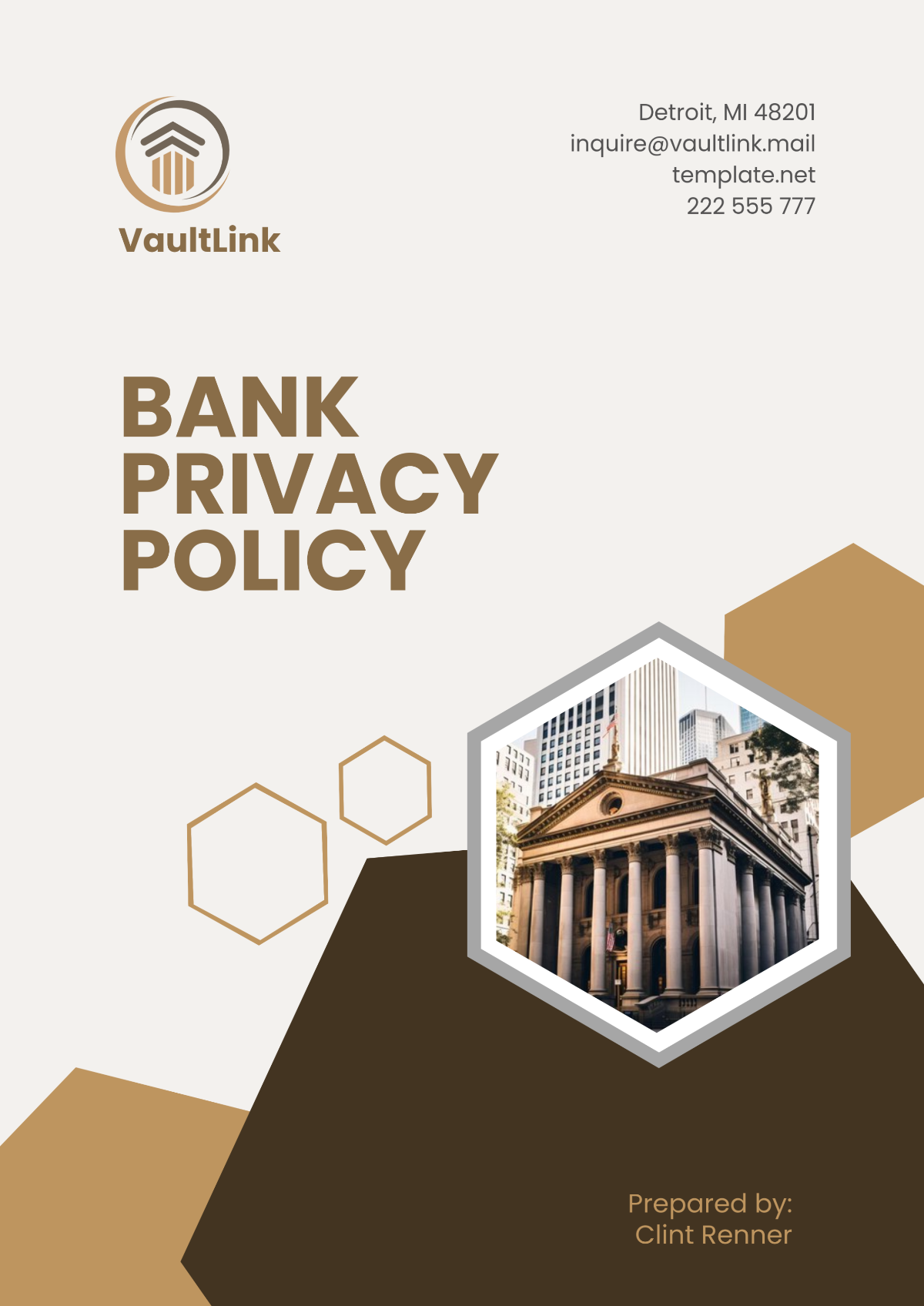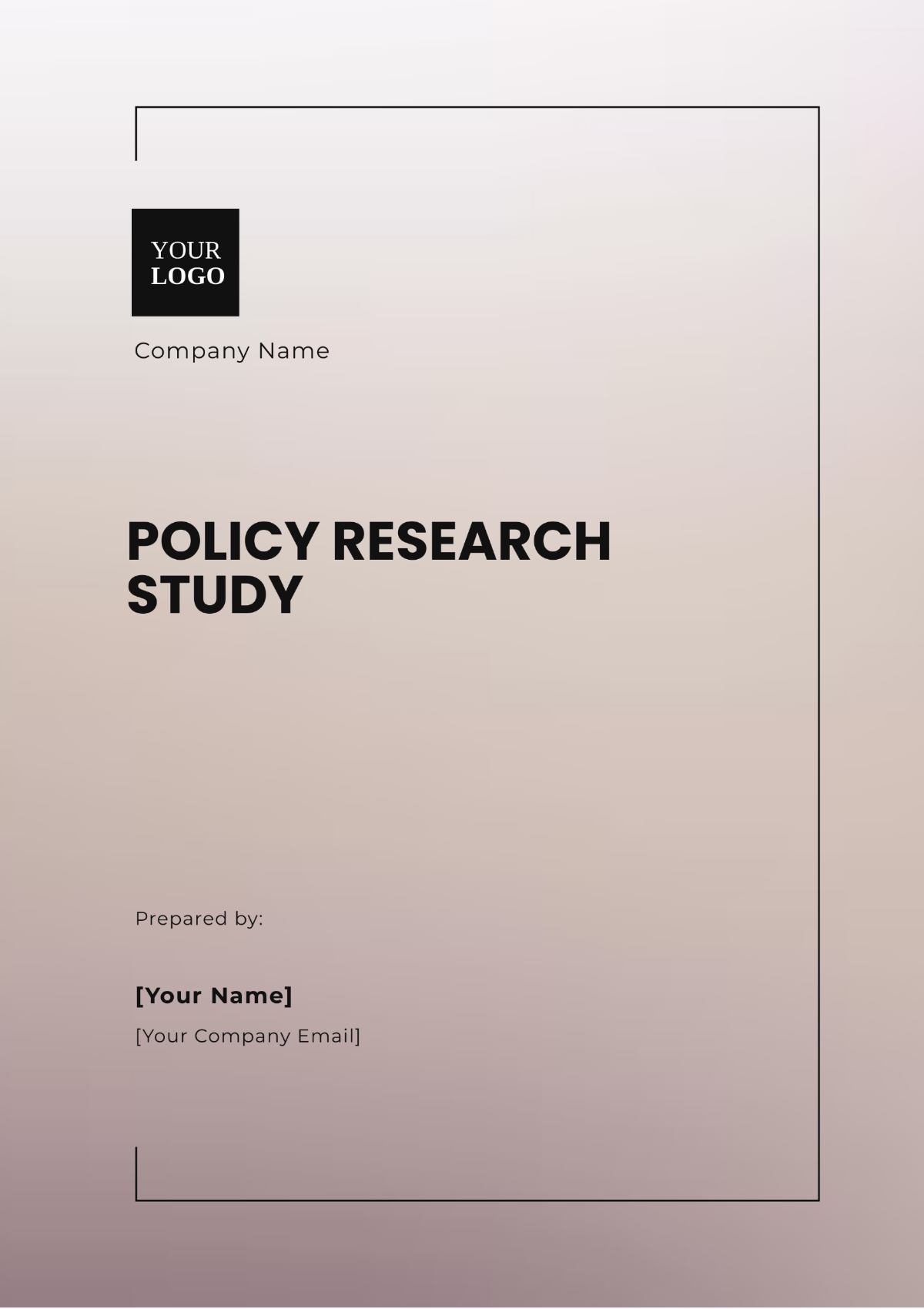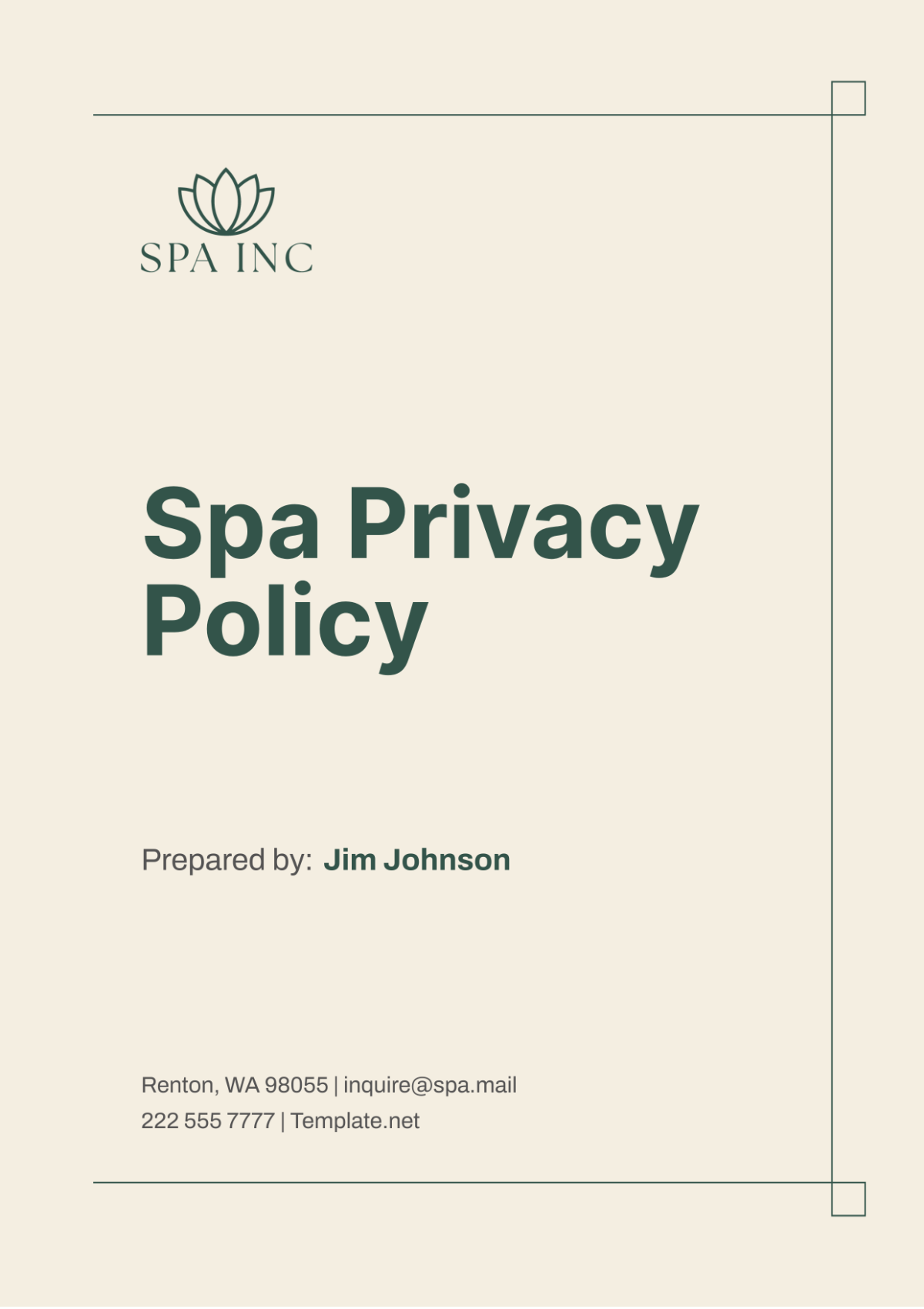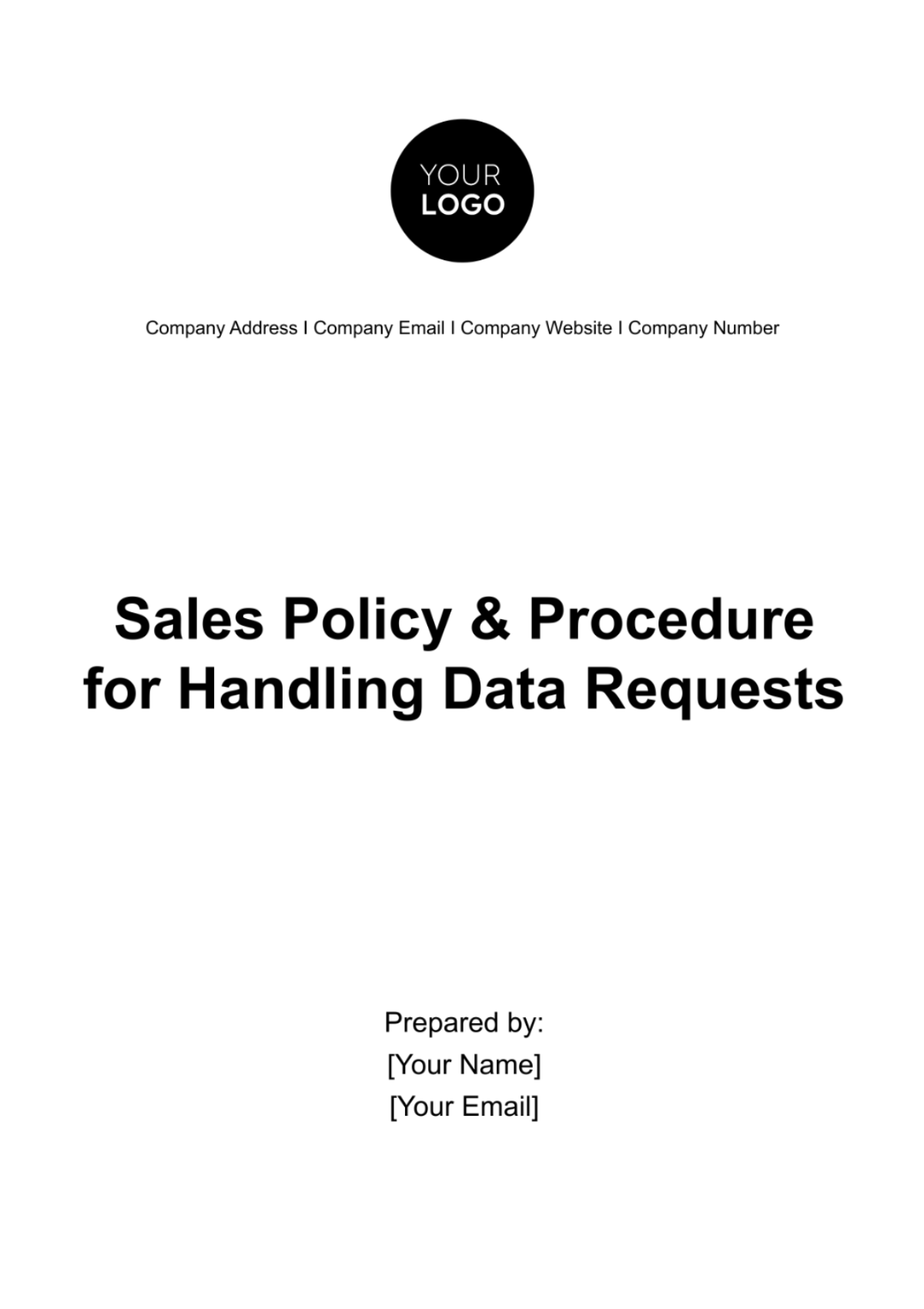Policy & Procedure for IT and Data Privacy
TABLE OF CONTENTS
Introduction ---------------------------------------------------------------------3
Scope ---------------------------------------------------------------------------3
Definitions -----------------------------------------------------------------------4
Policy Statement ----------------------------------------------------------------4
Procedures ----------------------------------------------------------------------5
Roles and Responsibilities -------------------------------------------------------8
Compliance and Enforcement --------------------------------------------------10
Review and Revision ------------------------------------------------------------11
Introduction
The purpose of this document is to outline [Your Company Name]'s policies and procedures concerning Information Technology (IT) and Data Privacy within the Human Resources (HR) department. This document aims to ensure that all HR-related IT systems are secure, and that the data privacy of employees is maintained.
Importance
In the age of digital transformation, the HR department handles a significant amount of sensitive data. This data is not only crucial for business operations but also holds immense personal value for employees. Therefore, it is imperative to have robust IT and Data Privacy policies in place.
Scope
The scope of this policy and procedure document is far-reaching, encompassing all aspects of IT and data privacy management within the Human Resources (HR) department of [Your Company Name]. Its reach extends to all employees, contractors, and third-party vendors who may, in any capacity, interact with HR-related IT systems and data.
Stakeholder Group | Covered by this Policy? |
| Yes |
| Yes |
| Yes |
| Yes |
| Yes |
| Yes |
In practical terms, this means that anyone who accesses, processes, or handles HR data, whether it pertains to employee records, benefits information, recruitment data, or any other HR-related data, falls under the purview of this policy. Regardless of the specific role, each individual connected to the HR department is responsible for adhering to the guidelines, protocols, and procedures laid out in this document.
Given the sensitive nature of HR data, it is imperative that this policy and procedure extend its coverage to all potential stakeholders. In the modern era of digital connectivity, the boundaries of data access can be porous, and data privacy can easily be compromised if comprehensive measures are not put in place. Therefore, [Your Company Name] has taken the initiative to establish a policy that addresses the need for data security and privacy in every aspect of HR operations.
Definitions
To ensure clarity and understanding, it is essential to establish precise definitions for terms used within this policy and procedure document. The following definitions provide clarity regarding the key concepts that are central to this policy:
Term | Covered by this Policy? |
Personal Data | Any information related to an identified or identifiable individual. |
Data Controller | The entity that determines the purposes and means of processing personal data. |
Data Processor | The entity that processes data on behalf of the Data Controller. |
By clearly defining these terms, [Your Company Name] seeks to eliminate any ambiguity in the interpretation of this policy and procedure document. This ensures that all stakeholders have a common understanding of the key concepts, which is crucial for effective implementation and compliance.
Policy Statement
The policy statement of [Your Company Name] pertaining to IT and Data Privacy within the HR department is underpinned by a firm commitment to excellence in information technology security and data privacy management. This section serves as the foundational statement that encapsulates the organization's dedication to safeguarding HR data, ensuring its integrity, and maintaining a high standard of data privacy.
Policy Statement |
[Your Company Name] is committed to maintaining the highest standards of IT security and data privacy. All HR-related IT systems must be secure, and employee data must be handled with the utmost care and confidentiality. |
In today's digitally interconnected world, the management and protection of HR data are of paramount importance. Employee data is not only vital for the seamless functioning of HR operations but also holds immense personal significance for each employee. Acknowledging this dual responsibility, [Your Company Name] articulates its unwavering commitment to maintaining the highest standards in IT security and data privacy.
This commitment extends to all aspects of HR operations, from data collection and storage to data processing and transmission. It encompasses not only the technical aspects of IT security but also the ethical and legal dimensions of data privacy. At its core, this policy statement reinforces the organization's dedication to treating employee data with the utmost care, confidentiality, and respect.
Procedures
IT Security Measures
Password Policies
One of the fundamental pillars of IT security within the HR department at [Your Company Name] is the establishment and strict enforcement of robust password policies. Passwords serve as the first line of defense against unauthorized access to HR-related IT systems and sensitive data. To ensure the security and integrity of these systems, the following comprehensive password policies have been established:
Password Policy | Description |
Complexity Requirements | Passwords must meet specific complexity requirements, including a combination of uppercase and lowercase letters, numbers, and special characters. This complexity serves as a deterrent against easily guessable passwords. |
Password Length | Passwords must be of sufficient length to withstand brute-force attacks. A minimum length of 12 characters is mandated to enhance security. |
Password Expiry | To mitigate the risk of compromised passwords, a policy of regular password changes has been implemented. Passwords must be changed every 90 days, ensuring that even if a password is compromised, it has a limited shelf life. |
Account Lockout | After a defined number of failed login attempts, user accounts will be temporarily locked to prevent unauthorized access. |
Password Storage | Passwords are securely stored using industry-standard encryption techniques, ensuring that even administrators cannot access plaintext passwords. |
Two-Factor Authentication (2FA)
In addition to robust password policies, [Your Company Name] has implemented Two-Factor Authentication (2FA) as an additional layer of security for accessing sensitive HR data and systems. 2FA requires users to provide two forms of verification before granting access. This includes something they know (e.g., a password) and something they have (e.g., a mobile device).
2FA Policy | Description |
Implementation | 2FA is implemented for accessing all sensitive HR data and systems. |
Verification Steps | Users are required to provide both a password and a unique verification code from their 2FA device to gain access. |
Device Management | Users are responsible for securely managing their 2FA devices and ensuring they are not shared or compromised. |
The use of 2FA significantly enhances the security of HR-related IT systems by reducing the risk of unauthorized access, even if login credentials are compromised. This additional layer of security ensures that only authorized individuals can gain access to sensitive HR data.
Regular Audits
To maintain the integrity of HR-related IT systems and ensure ongoing compliance with security measures, [Your Company Name] conducts regular IT audits. These audits are conducted on a quarterly basis and serve multiple purposes:
IT Audit Process | Purpose |
System Assessment | Audits assess the overall health and security of HR-related IT systems, identifying vulnerabilities and weaknesses. |
Compliance Verification | Audits verify that all security measures and procedures outlined in this policy are being adhered to. |
Incident Detection | Audits can help detect any unusual or suspicious activities that may indicate a security breach. |
Continuous Improvement | Findings from audits are used to make continuous improvements to IT security measures, ensuring that the HR department remains well-protected against evolving threats. |
By conducting these regular audits, [Your Company Name] demonstrates its commitment to proactive security and its dedication to maintaining a secure HR IT environment.
Data Privacy Measures
Regular Audits
The safeguarding of personal data is a paramount concern within the HR department at [Your Company Name]. To ensure the privacy and security of this data, robust data encryption measures have been put in place. Encryption is a process that transforms data into an unreadable format, which can only be deciphered with the appropriate decryption key.
Data Encryption Policy | Description |
Data in Transit | All personal data transmitted over networks or between systems is encrypted using industry-standard protocols to prevent interception by unauthorized parties. |
Data at Rest | Data stored on servers, databases, and backup media is encrypted to prevent unauthorized access, even in the event of physical security breaches. |
Encryption Standards | Industry-standard encryption algorithms and protocols are employed to ensure that HR data remains confidential and secure at all times. |
Data encryption is a crucial component of [Your Company Name]'s commitment to data privacy.
Access Control
Access to HR-related data is tightly controlled to ensure that only authorized individuals have the privilege of accessing and handling sensitive employee information. The access control measures at [Your Company Name] encompass multiple facets:
Access Control Measures | Description |
User Authentication | Users must undergo a stringent authentication process to gain access to HR data. This includes providing valid login credentials, which are subject to the password policies and 2FA requirements outlined in Section 5.1. |
Role-Based Access | Access to HR data is role-based, meaning that individuals are granted access only to the data and systems necessary for their specific job functions. This principle of least privilege reduces the risk of unauthorized access. |
Audit Trails | Detailed audit trails are maintained, recording all access and activities related to HR data. These audit logs are regularly reviewed to detect any suspicious or unauthorized access. |
Data Segmentation | HR data is segmented to ensure that different types of data (e.g., payroll information, medical records) are stored separately, and access is granted only to those who require it. |
Data Retention
To align with data privacy regulations and ethical data handling practices, [Your Company Name] follows stringent data retention policies. Data retention refers to the practice of storing data for a specific period, after which it is securely deleted or anonymized.
Data Retention Policy | Description |
Retention Periods | Data retention periods are determined based on the type of data and relevant legal requirements. For example, certain HR records may need to be retained for a specific number of years to comply with labor laws. |
Secure Deletion | Once the retention period expires, data is securely deleted using industry-standard data erasure techniques. This approach ensures compliance with data privacy regulations and minimizes the risk of data breaches. |
By implementing these comprehensive data privacy measures, [Your Company Name] upholds its commitment to the protection of employee data and maintains the highest standards of data privacy within the HR department.
Roles and Responsibilities
In the context of IT and Data Privacy within the HR department at [Your Company Name], the delineation of roles and responsibilities is critical to ensuring effective implementation and adherence to policies and procedures. This section elaborates on the key roles and their respective responsibilities:
HR Department
The HR department is central to the management and protection of employee data. Its responsibilities encompass several key areas:
Role | Responsibilities |
Data Collection | HR is responsible for collecting and updating employee data accurately and securely. |
Access Management | HR manages user access to HR systems and ensures that access privileges align with job roles. |
Data Integrity | Ensuring the integrity and accuracy of HR data is a paramount responsibility. |
Data Retention | HR must adhere to data retention policies and ensure the secure disposal of data when required. |
Data Sharing | When sharing HR data, HR must ensure that data privacy regulations and internal policies are followed. |
IT Department
The IT department plays a crucial role in maintaining the security and functionality of HR-related IT systems:
Role | Responsibilities |
System Security | IT is responsible for implementing and maintaining security measures, including password policies, 2FA, and encryption. |
System Maintenance | IT ensures the ongoing maintenance and availability of HR systems. |
Auditing and Monitoring | IT conducts regular audits and monitors system activities to detect and respond to security incidents. |
Data Backup | IT is responsible for data backup and disaster recovery planning to safeguard HR data. |
Technical Support | Providing technical support to HR users regarding system access and functionality. |
Employees
Every employee within [Your Company Name] has a role to play in ensuring IT security and data privacy within the HR department:
Role | Responsibilities |
Data Handling | Employees are responsible for handling HR data in accordance with policies and procedures. |
Password Management | Employees must adhere to password policies and use 2FA as required. |
Reporting Incidents | Any employee who suspects a security incident or data breach must promptly report it to HR or IT. |
Training and Awareness | Employees should participate in data privacy training and remain aware of their role in protecting HR data. |
The clear delineation of these roles and responsibilities ensures that all stakeholders understand their part in maintaining IT security and data privacy within the HR department.
Compliance and Enforcement
Compliance with this policy and procedure for IT and Data Privacy in HR is mandatory for all individuals covered by its scope. [Your Company Name] takes compliance seriously and has established mechanisms for enforcement to ensure that the policy is effectively adhered to.
Compliance Measures
Compliance Measures | Description |
Training | [Your Company Name] conducts regular training sessions to educate HR staff, IT personnel, and other stakeholders on the policies and procedures outlined in this document. |
Policy Acknowledgment | All employees and relevant stakeholders are required to acknowledge their understanding of and commitment to this policy. |
Monitoring | Regular monitoring, including audits and access reviews, is conducted to verify compliance. |
Incident Reporting | A clear and efficient incident reporting process is in place to report any violations or potential breaches of this policy. |
Enforcement
Enforcement measures may be initiated when violations of this policy are detected. Enforcement actions may include, but are not limited to:
Enforcement Actions | Description |
Corrective Actions | Employees found in violation of this policy may be required to undergo corrective training or take specific actions to remedy the violation. |
Disciplinary Actions | Depending on the severity and repetition of violations, disciplinary actions may be taken, including warnings, suspension, or termination of employment. |
Legal Action | In cases of serious breaches that result in harm to individuals or the organization, legal action may be pursued. |
[Your Company Name] is committed to fair and consistent enforcement of this policy to maintain the highest standards of IT security and data privacy.
Review and Revision
The review and revision process is a vital aspect of maintaining the effectiveness and relevance of this policy and procedure for IT and Data Privacy in HR. [Your Company Name] recognizes that technology evolves, data privacy regulations change, and threats to IT security continually evolve. Therefore, this policy is subject to regular review and revision to ensure its continued alignment with best practices and legal requirements.
Annual Review
The policy is reviewed annually by [Your Company Name]'s legal and compliance teams. During the annual review, the following aspects are considered:
Annual Review Aspects | Purpose |
Regulatory Changes | Any changes in data privacy regulations or IT security standards are assessed to ensure compliance. |
Incident Analysis | Data security incidents and breaches that occurred during the year are analyzed, and lessons learned are applied to policy improvements. |
Technology Assessment | Advancements in technology and changes in HR IT systems are evaluated to determine if policy updates are necessary. |
Revision Process
When revisions to the policy are deemed necessary, a structured revision process is followed:
Revision Process Steps | Description |
Policy Proposal | Proposed revisions are documented, including the rationale for the changes. |
Stakeholder Feedback | The proposed revisions are subject to legal review to ensure they align with applicable laws and regulations. |
Legal Review | The proposed revisions are subject to legal review to ensure they align with applicable laws and regulations. |
Approval | Once approved, the revised policy is communicated to all relevant parties, and training on the updated policy is provided as necessary. |
The commitment to regular review and revision ensures that [Your Company Name] maintains a policy and procedure that is responsive to the ever-evolving landscape of IT security and data privacy.
This Policy & Procedure for IT and Data Privacy in HR outlines [Your Company Name]'s commitment to ensuring the security and privacy of HR-related data. It provides clear guidance on roles, responsibilities, and compliance measures to maintain a secure HR IT environment. If you require further details or specific additions to any section, please let me know.
